HOW TO MAKE NATURAL DYE USING VEGETABLES AND SPICES
Do you want to learn how to make natural dye? It is a fun way to create different colors using raw materials from the kitchen.
What are some natural ingredients that can be used to make dyes? Let’s look around and collect a few supplies to create beautiful natural shades.
Natural dyeing is a great way to transform fabric, clothing, or Easter eggs into art – and you don’t need much more than what’s in your kitchen! By using grocery store ingredients, it’s possible to create captivating colors that are lovely shades of nature. Plus, this eco-friendly method gives peace of mind knowing materials are sourced sustainably.
Today the Handcrafted Society presents eight beautiful Easter Projects, all about eggs. A special welcome to our special guest host, my friend Diane @southhousedesigns.
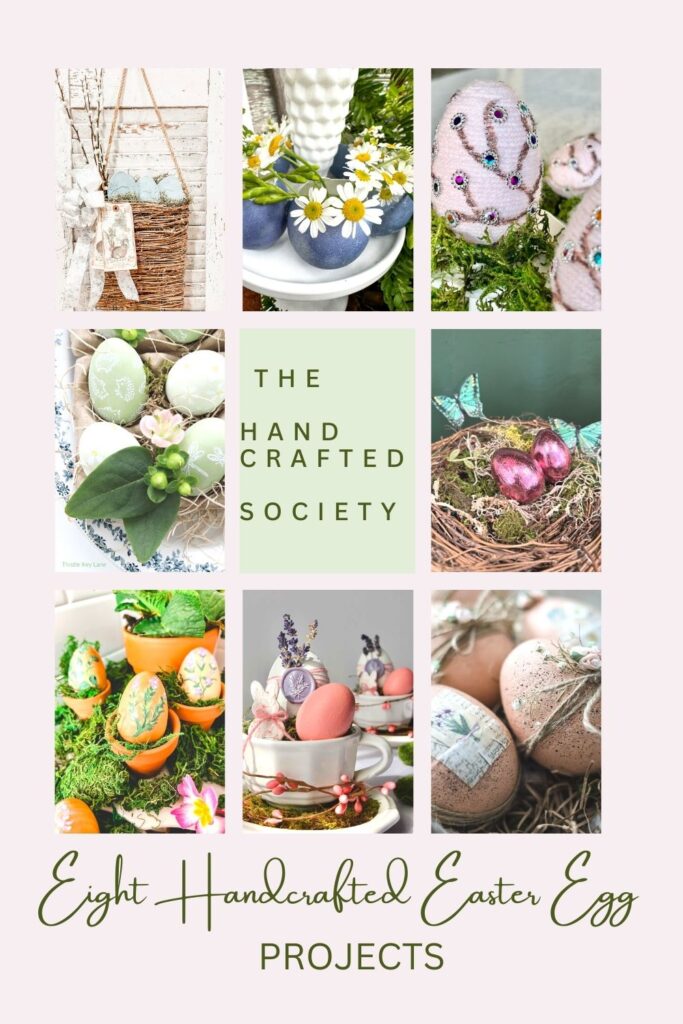
What are some natural ingredients that can be used to make dyes?
Natural dye is an excellent alternative to synthetic dyes, offering various colours created from natural sources like plant material, flowers, and food. So whether you’re looking for deep blues or subtle earthy tones made with tea leaves, there’s nothing quite as satisfying as knowing that your dye is toxic-free.

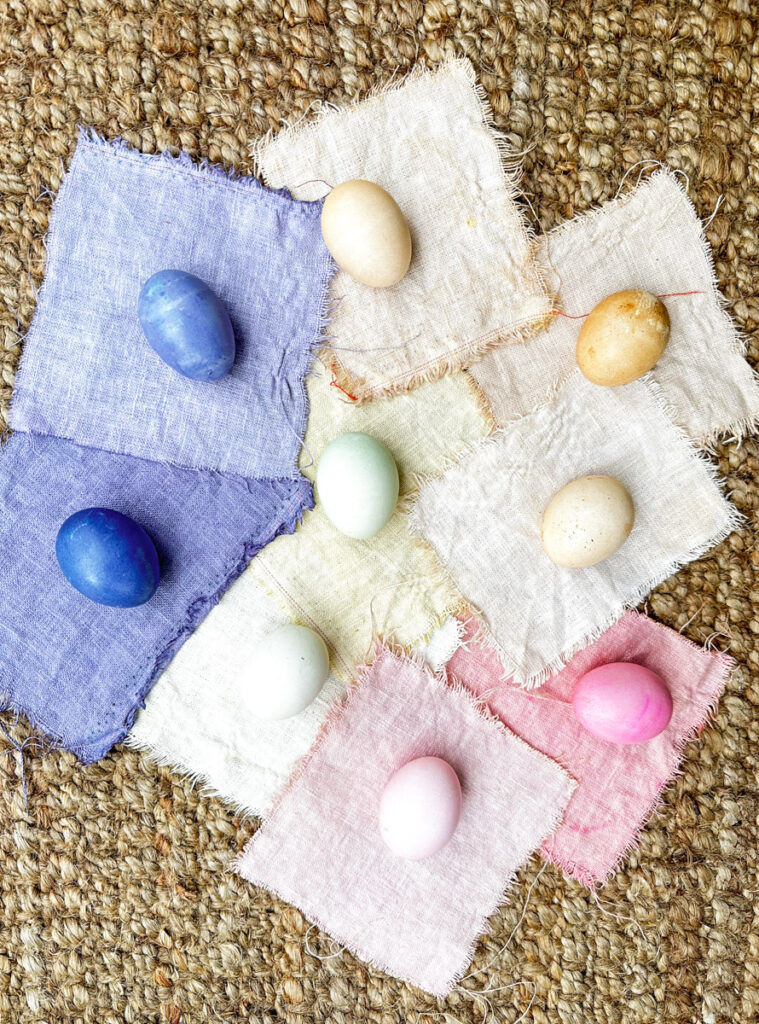
What foods can be used to make natural dye? And what colors do they produce?
Natural food dyes
- Red cabbage – This vegetable will produce a turquoise blue dye
- Avocado skins – A colorfast light pink color
- Avocado pits – A colorfast light pink color
- Spinach – Light green dye
- Red beets – Shades of pink
- Coffee – Shades of brown
- Tea – Shades of brown
- Red onion skins – An array of reddish-brown colors
- Yellow onion skins – From light pink to a deep copper color
- Pomegranate – Pink Dye
- Blueberries – A variety of shades of blue
- Carrots – Peach, golden orange color dye
- Mint leaves – Green dye
- Celery leaves – Green dye
- Artichokes – Grey-green dye
- Walnuts – Brown dye
- Blackberries – Light lavender color dye
- Turmeric – Bright Yellow dye
- Chili Powder – Shades of brown
- Paprika – A reddish brown dye
- Cherries – Red dye
- Kale – Green dye
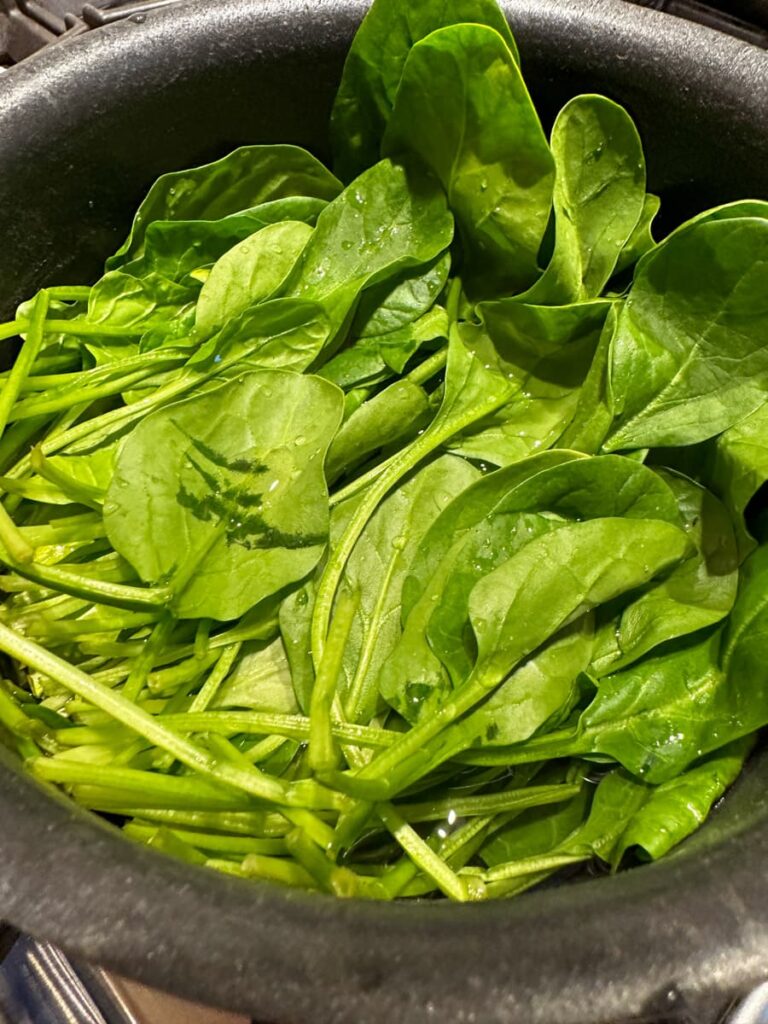
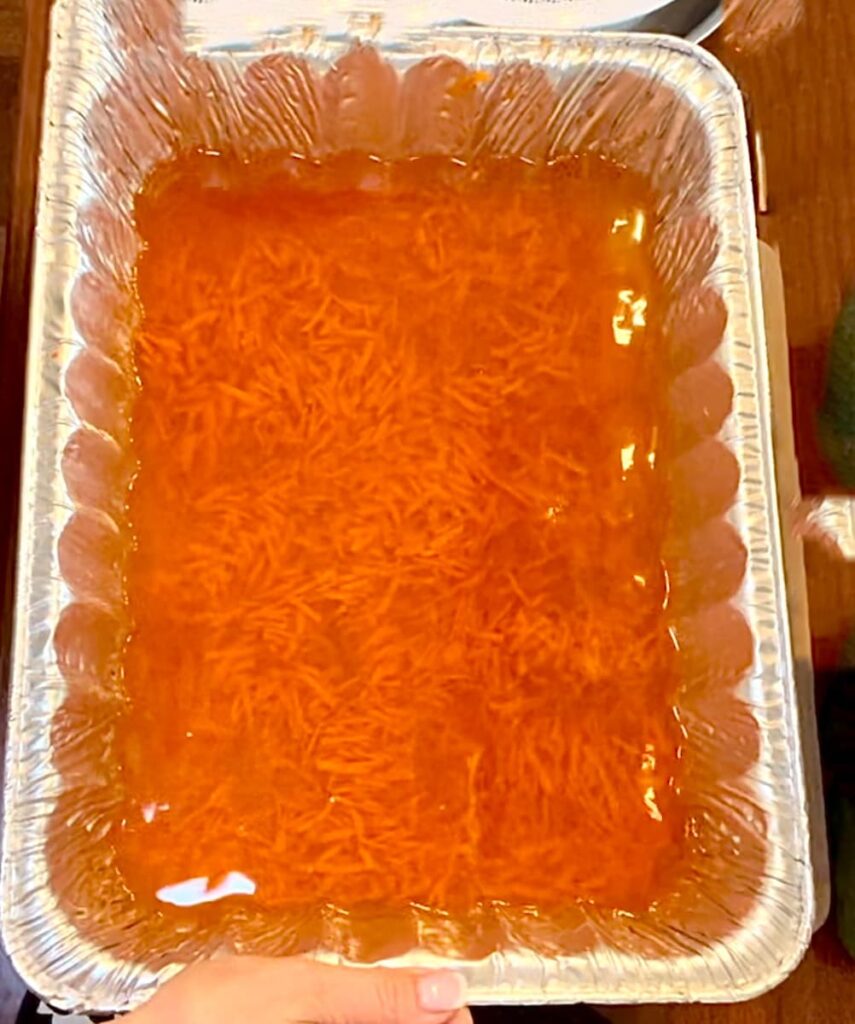
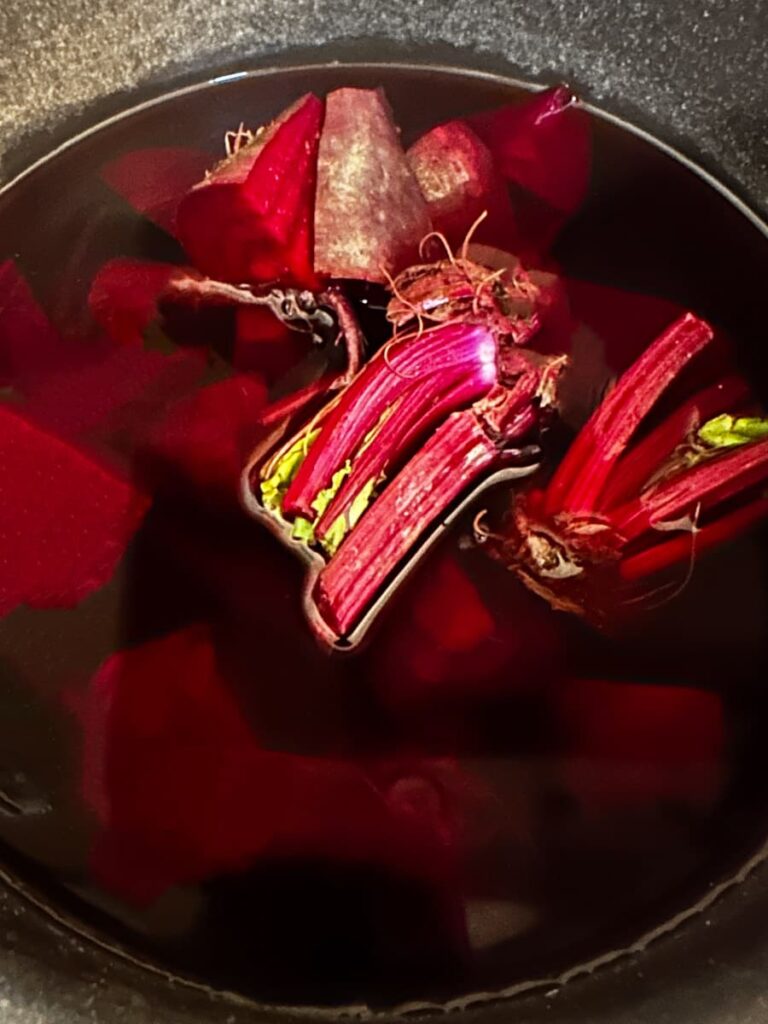
Red cabbage Easter eggs
Red Cabbage gives the most brilliant turquoise blue eggs. Depending on how long you leave the eggs in the dye, you can get a variation of blues.
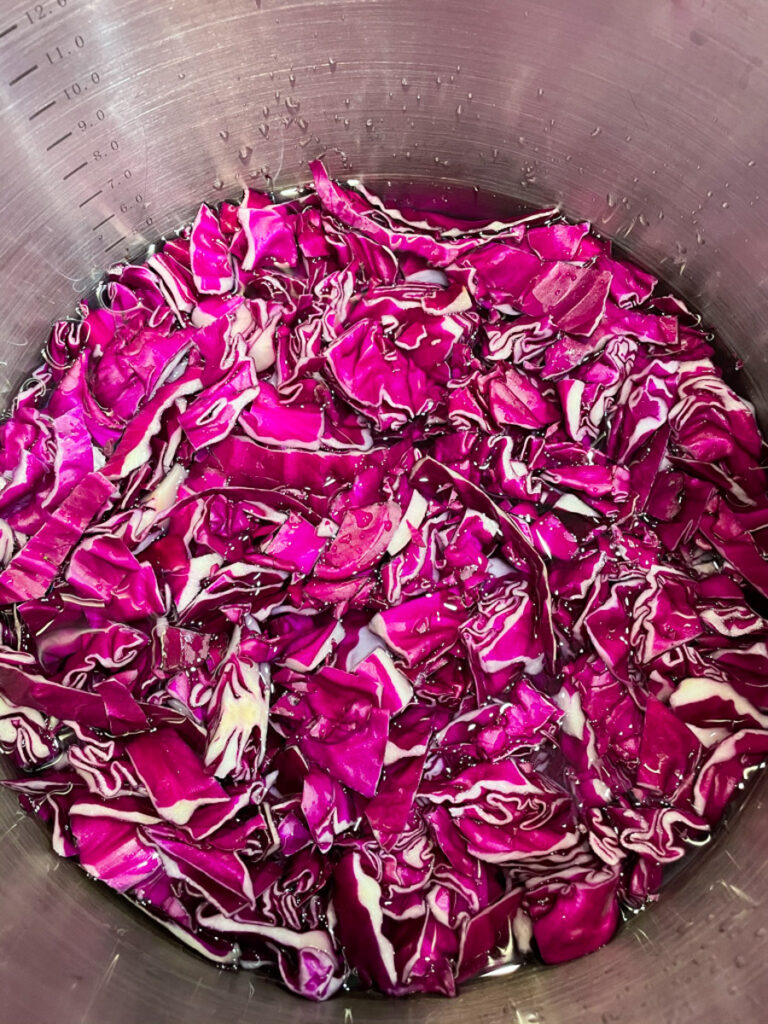
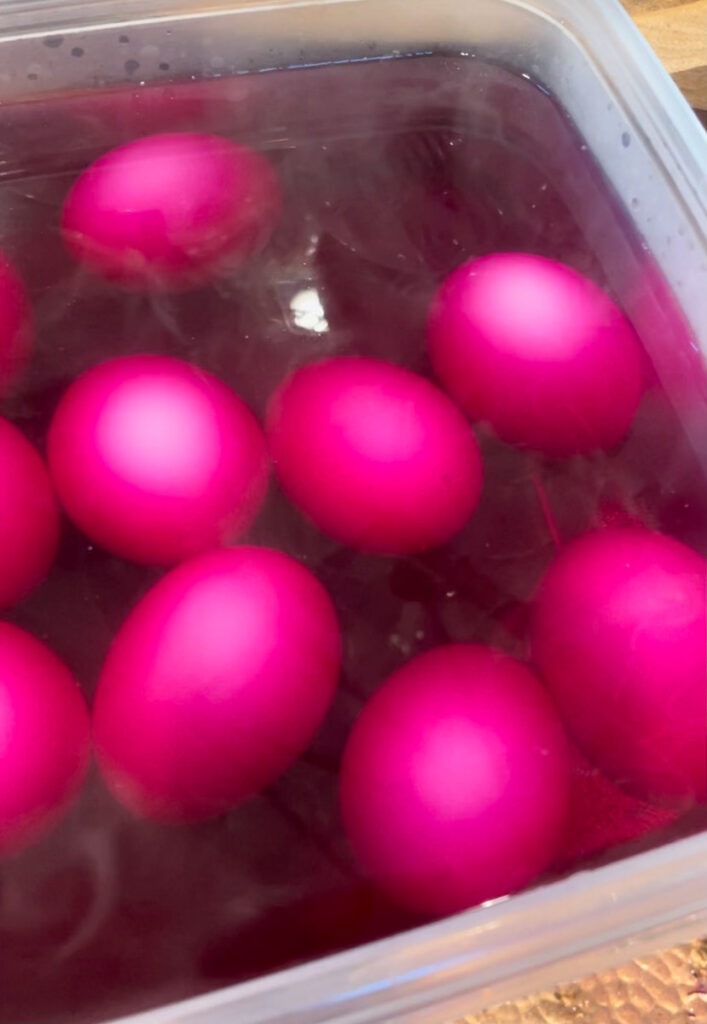
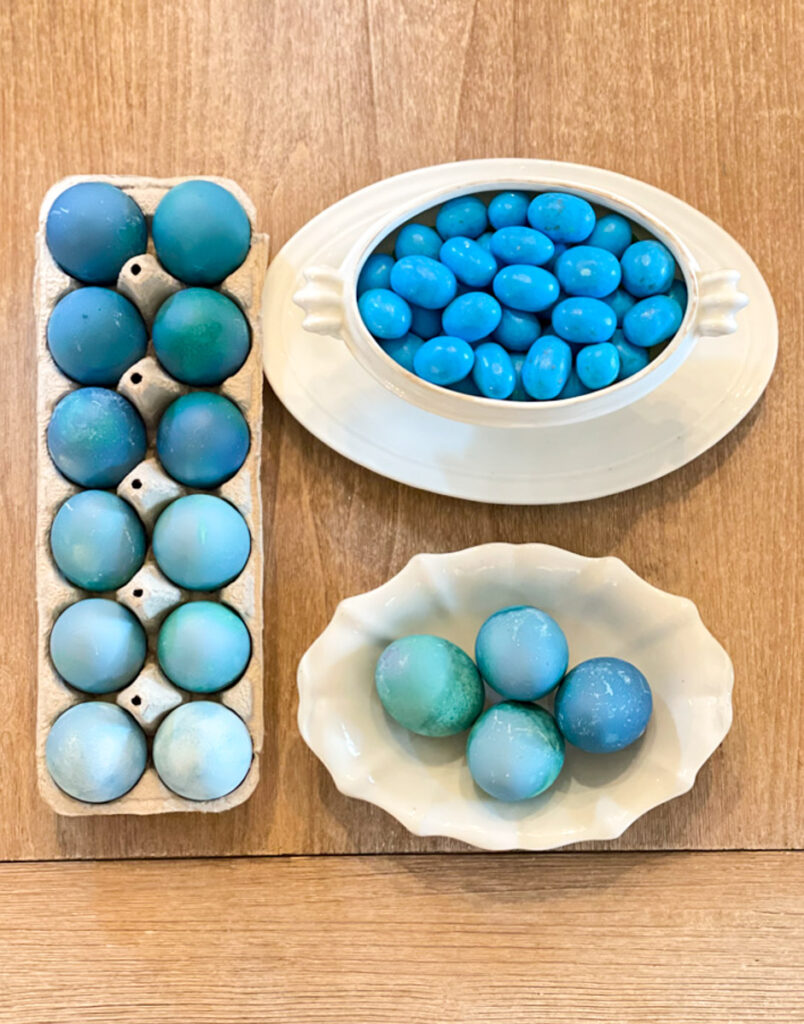
What are some of the best plant-based dyes with natural color? And what colors do they produce?
Natural plant dyes
You can use many flowers and plants to create a natural dye. Here are just a few.
- Rose petals – Depending on the color of rose petals you use (deep reds and pinks work the best).
- Marigolds – Yellow Dye
- Sunflower petals – Yellow dye
- Lilac branches – GIve you a yellowish-brown dye
- Woad – Blue dye ( you must follow this unique process, or you may get the wrong color. Check out this post from Tanya for the exact instructions).
- Dyers broom – Lemon yellow
- Cornflower – Blue dye
- Dandelions – Yellow dye
- Yarrow – Colorfast yellow dye
- Saffron – Yellow dye
- Dyers Chamomile – Yellow dye
- Dyers Tickseed – Orange dye color
- St. John’s Wort – Yellow tint when the color is extracted from the flowers
- Sulphurous Cosmos in red – the flowers will give a red dye, while the stems and leaves will give shades of yellow.
- Dahlias – Dahlia blossoms will make yellow, orange, and green dye colors.
- Hollyhock – Deep plum – These blossoms produce a lavender-pink color dye.
- Eucalyptus – Creating magnificent hues of tan, rust red, yellow, green, orange, and chocolate brown – all parts from leaves to bark are perfect for crafting unique fabrics in silk or wool fibers.
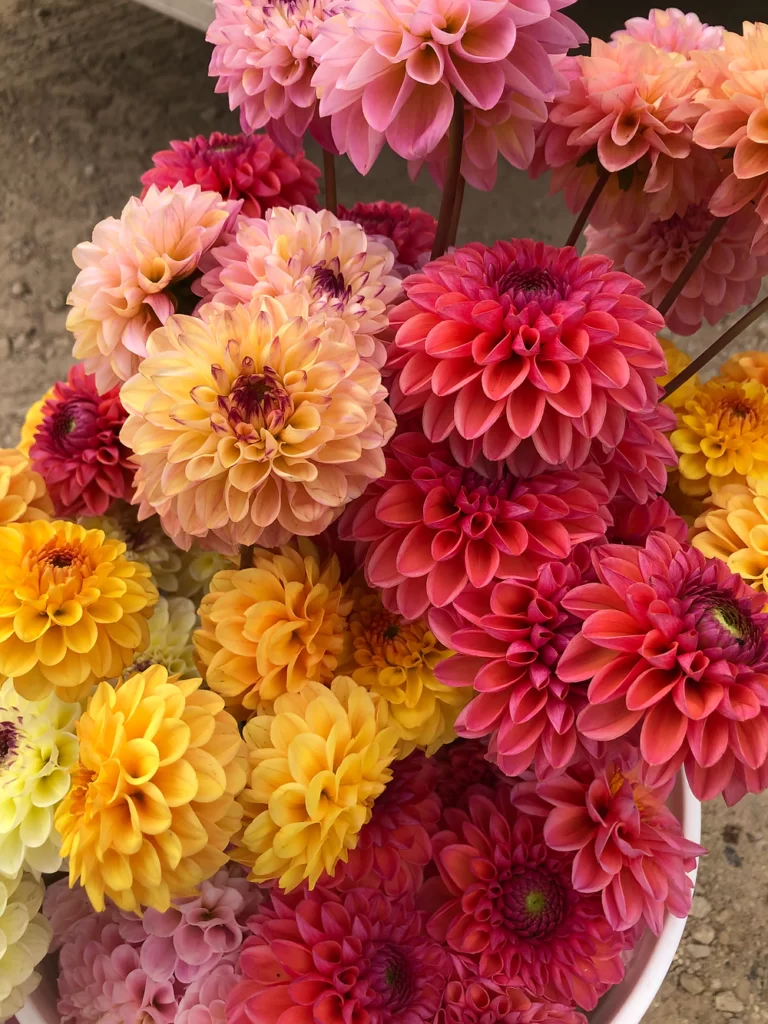
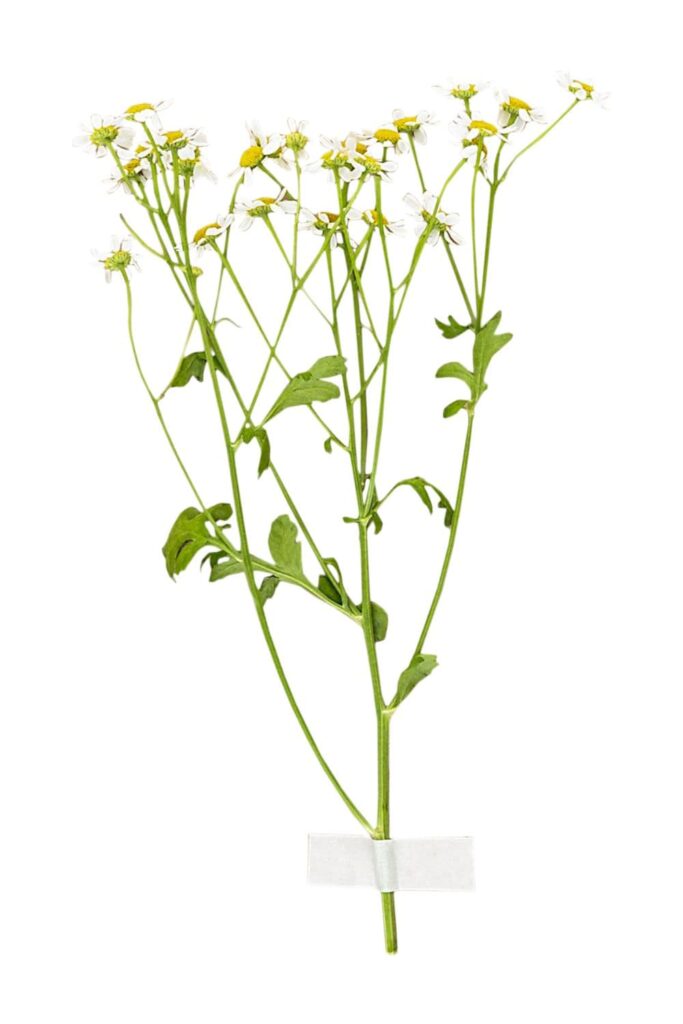
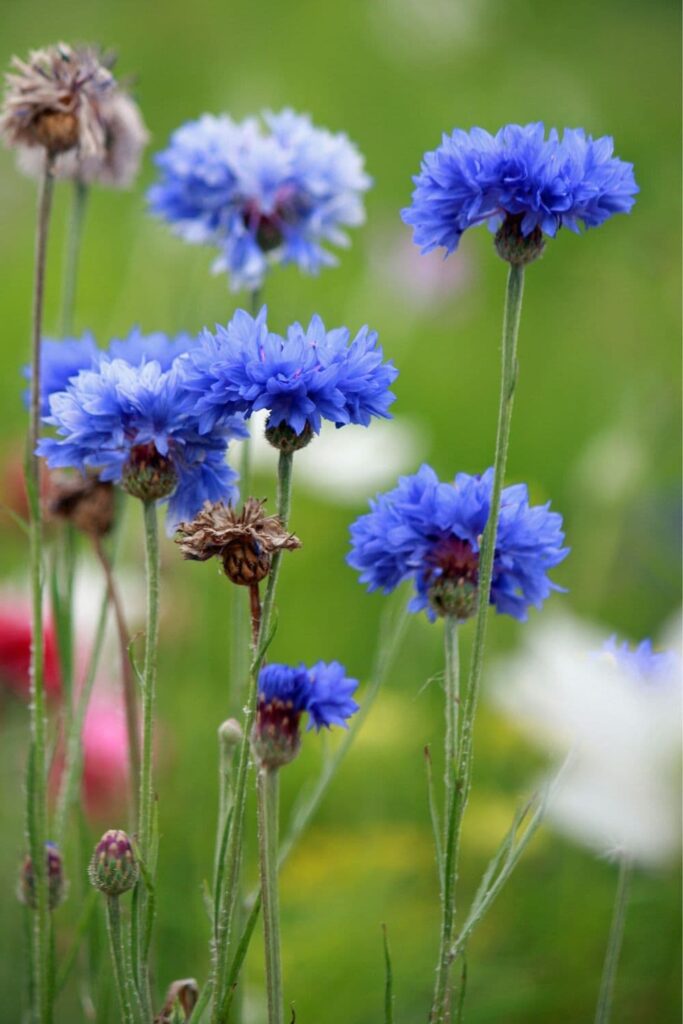
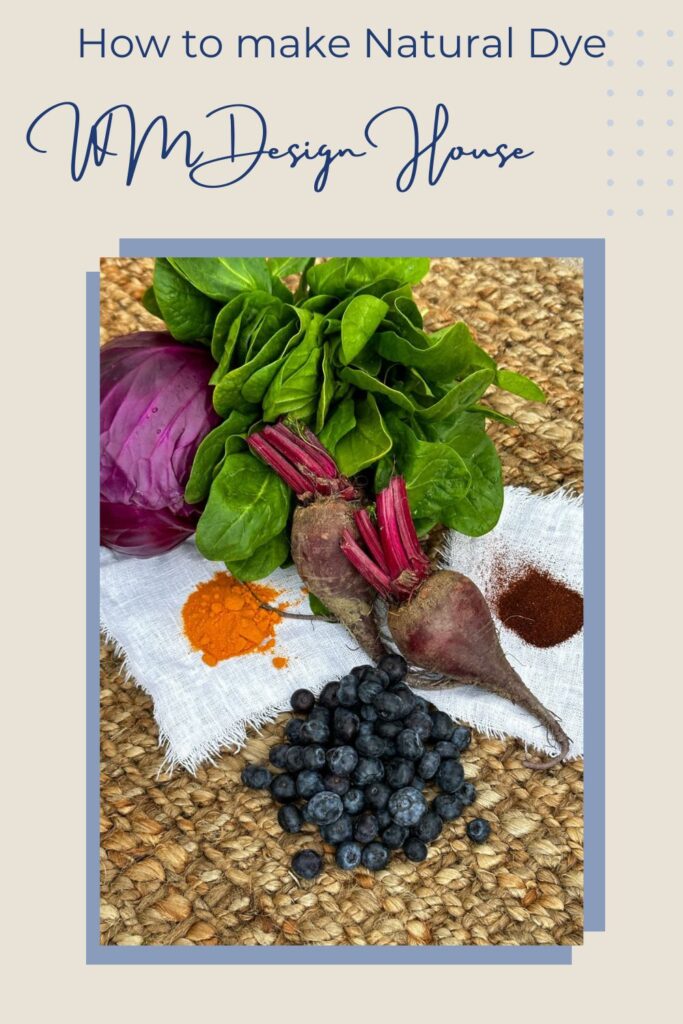
How do you make a natural dye?
To create beautiful, hued fabric using a natural dye bath, you need to start by prepping the material. First, it is necessary to soak the cloth in a solution before you go through the dyeing process.
If you are using a dye made with fruit, soak your natural fabrics in a mixture of salt and water ( 1/4 cup salt to 4 cups water) in a dye pot on the stovetop (on a simmer) for an hour before rinsing it off in cold water.
And if using a dye made from vegetables – Soak your natural fabrics in a mixture of vinegar and water ( 1 part vinegar to 4 parts of water) in a dye pot on the stovetop (on a slow boil) for one hour before rinsing it in cool water.
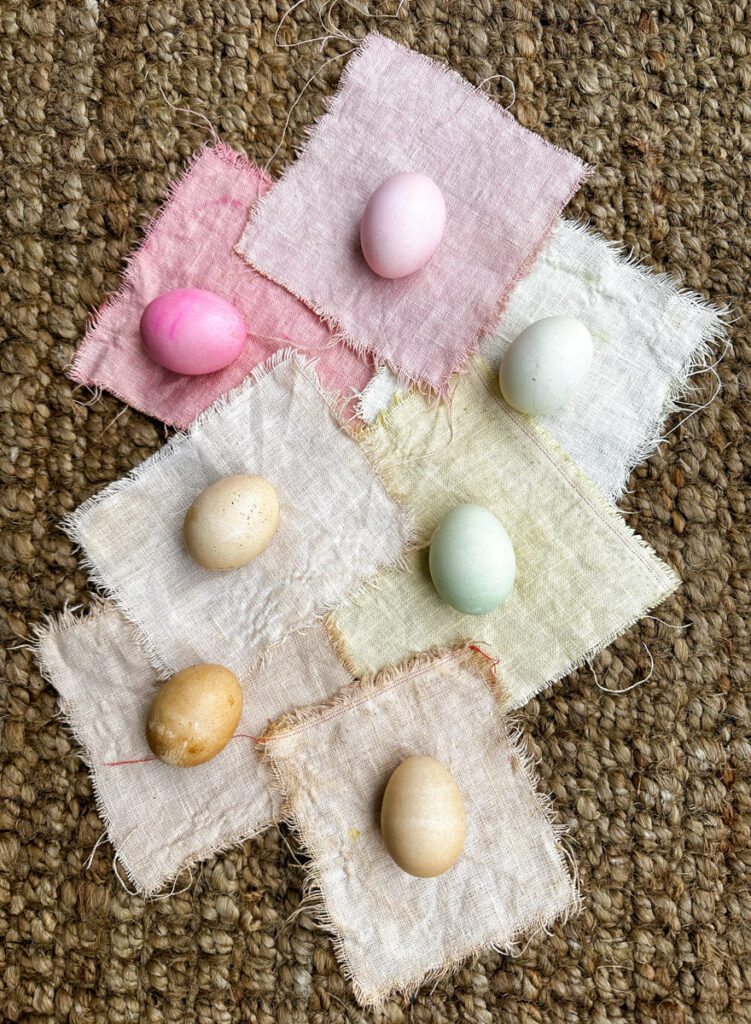
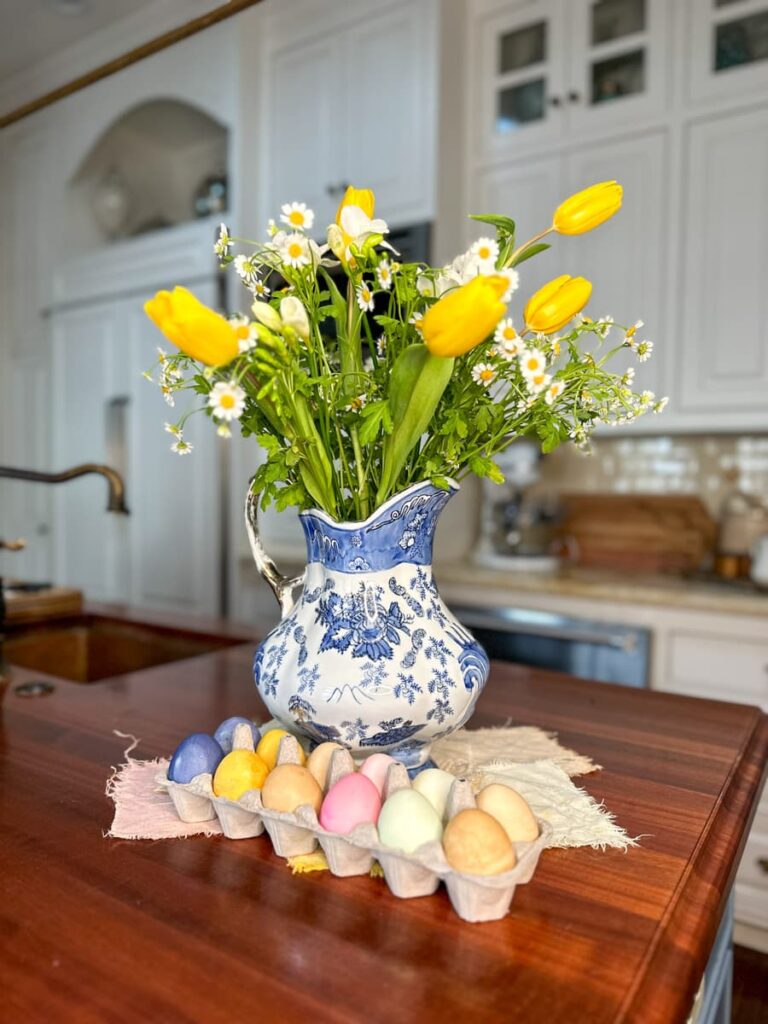
How to make the perfect hard-boiled egg
If you are dyeing eggs, I have the easiest way to boil them using an Instant Pot. They peel like a dream.
- Place the rack inside the Instant Pot.
- Add 1 cup of water.
- Place your eggs on the rack inside the Instant Pot with the water.
- Follow your Instant Pot instructions to seal your lid.
- Cook on high pressure for 5 minutes.
- Carefully release the steam for 5 minutes.
- Carefully take off the lid and remove the eggs.
- Place the eggs in an ice-water bath.
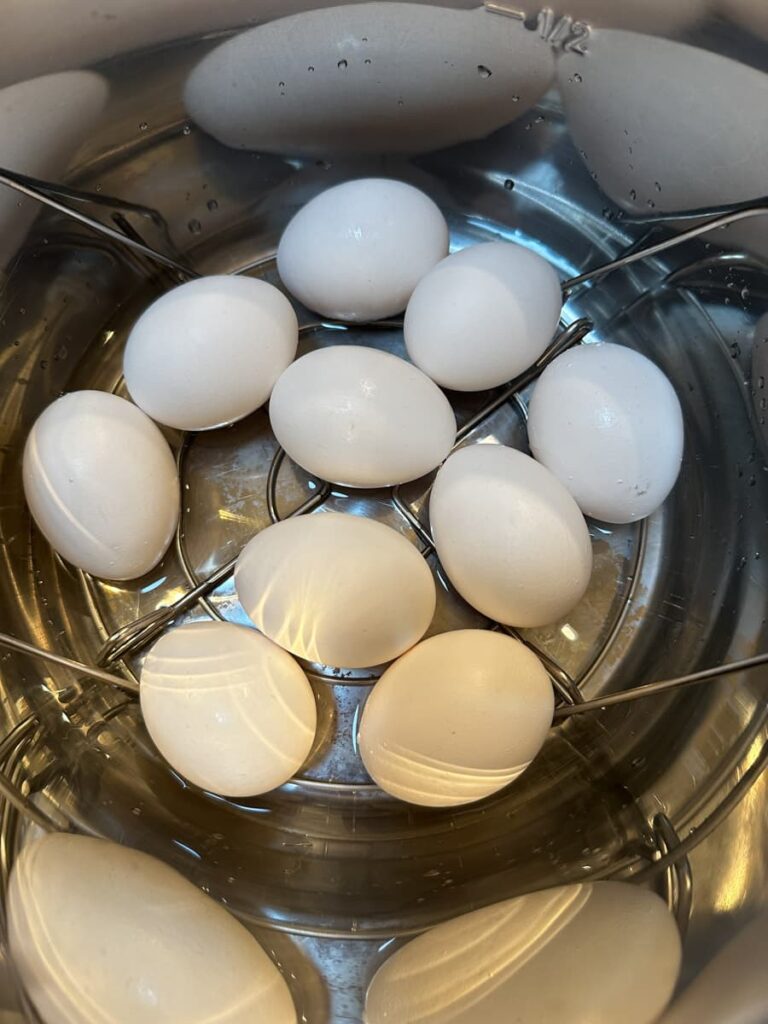
Directions for the Dye process: How to make natural dye
- Gather the vegetables, fruits, or flowers to make your natural dye.
- Gather all of the supplies needed to make the dye. (see supply list)
- Wear rubber gloves
- Chop your fruit, vegetables, flowers, or stems, and place them in a large stainless steel pot.
- Cover with twice as much water as it would take to cover your goods in the pot. (be sure you have enough water)
- Bring the mixture to a boil, then reduce it to a simmer. Different fruits and flowers need various amounts of time to boil. The longer you cook the mix, the deeper the color will get)
- Let the mixture cool a bit.
- Strain the mixture into a glass container.
- Soak the item that you are dying until you reach the depth of color you desire.
- Rinse your fabric in cool water or gently pat your eggs with a paper towel.
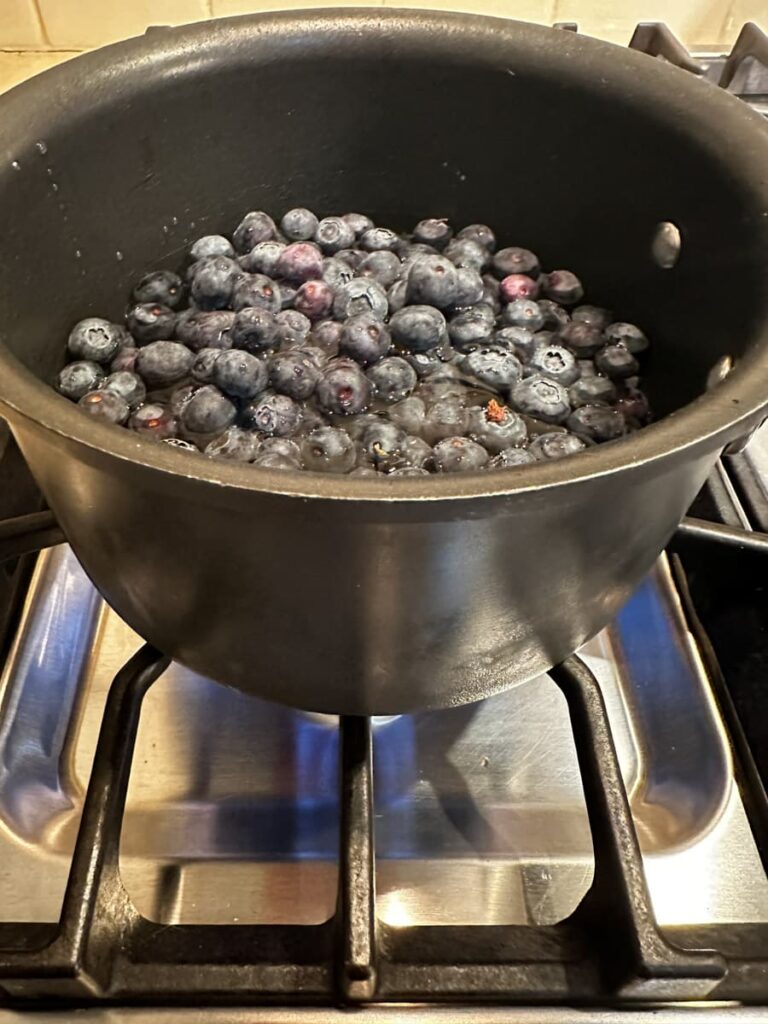
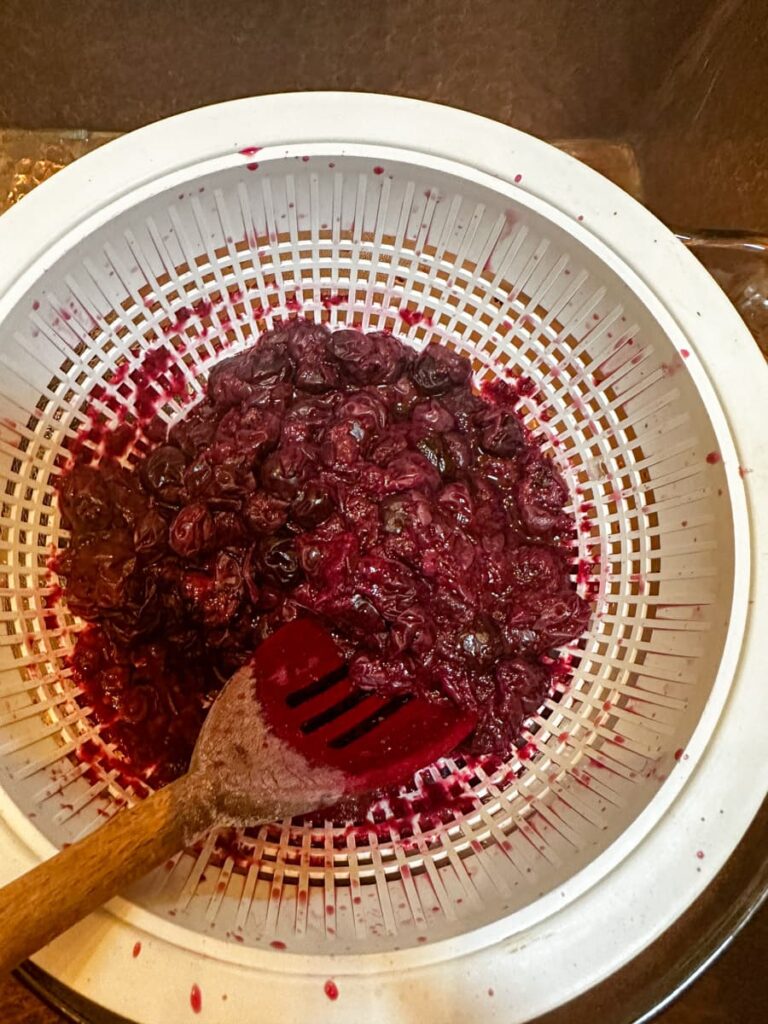
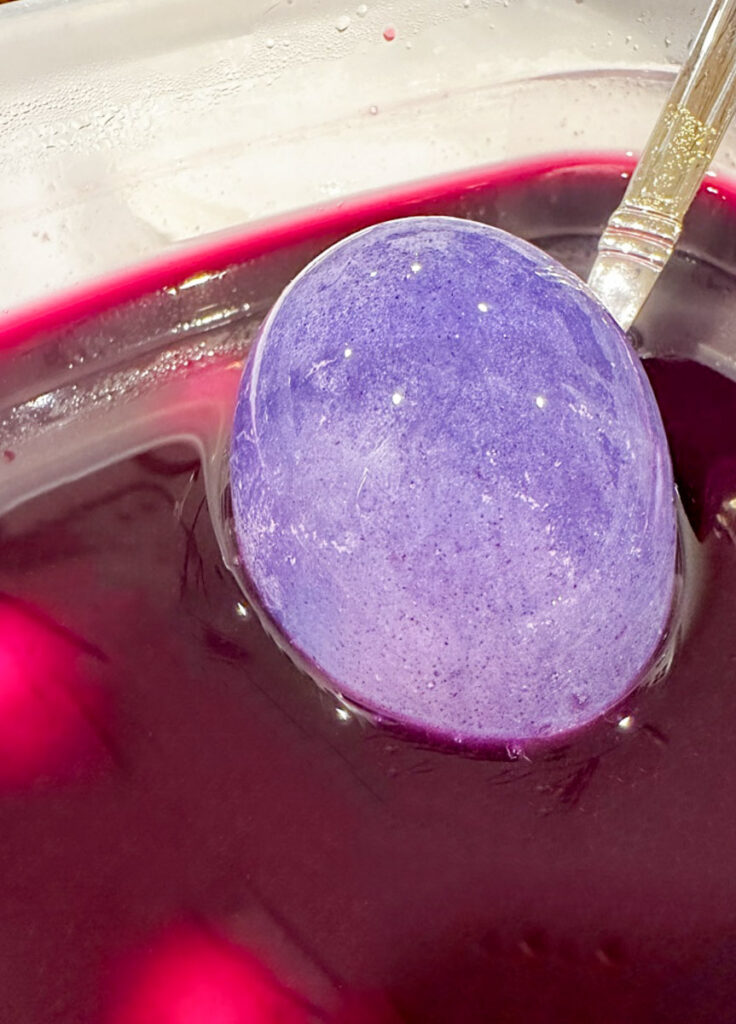
Dyeing time
It all depends on what you are dyeing and what depth of color you are looking for.
I used linen to create these dyed fabric swatches. I dipped the fabric for approximately thirty seconds to get the first swatch which is the lighter color.
The darker swatches were soaked in the dye mixture for approximately one to two minutes.
The dyeing time for eggs can also vary. Submerge your egg in the room temperature dye solution and keep checking the color. (Do not use eggs in hot water, as the egg will continue to cook). Remove the eggs when the color is to your liking.
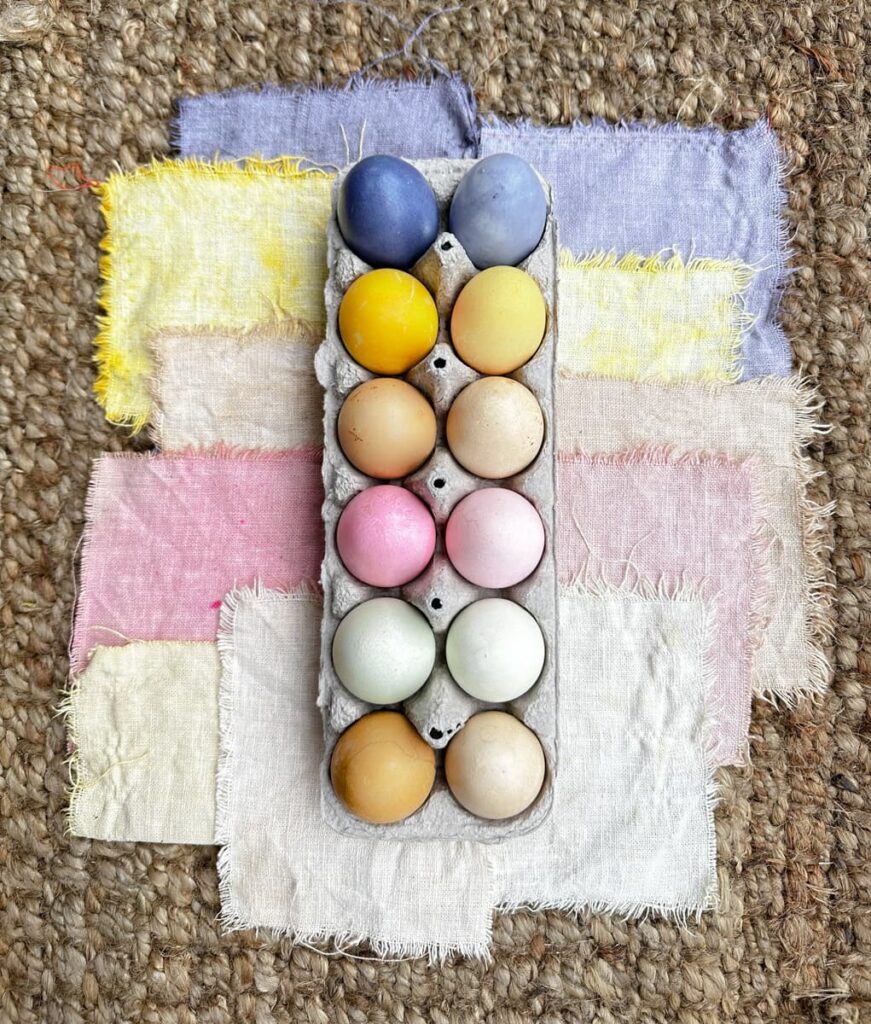
What are some benefits of using natural dyes?
- Natural dyes are gaining popularity due to their shallow environmental impact and biodegradable nature.
- These eco-friendly alternatives offer people an appealing, guilt-free option without contributing to pollution or harming the environment.
- You can create various colors, from soft and subtle shades of pink and yellow to deep tones of blues and browns.
- Natural dyes can provide a unique range of colors while also being earth-conscious. Not only are they better for the environment, but their biodegradable properties make them a green option compared to their synthetic alternatives.
What are some tips for making natural dyes from plants?
- Unleash your creative side and explore the colorful possibilities of dyeing! Each experience is unique, so why not test out different approaches — who knows what stunning results you’ll achieve?
- Obtaining the right shade of green has been challenging, and I’ve yet to master it. My current attempts with spinach gave me poor results despite extended soaking, so my next step is combining two bolder dyes: Blueberry and Turmeric. Hopefully, this will give me that vibrant hue I’m searching for!
- Create new colors by dying in one color and then a second color to create a new and unique hue for your fabric or eggs.
- You could dye in Turmeric first and then in yellow or red onion skins. Or try beets (which dye very quickly) and then shade in coffee.
- Try dyeing fabric at different temperatures. I found you can get significantly different colorations just by changing the temperature of the dye.
- The longer you leave the item in the dye, the darker the color will get. For example, I was striving for a dark navy blue egg, so I let my eggs steep overnight in the Blueberry dye.
- I found it helpful to double-strain dye mixtures with excess pulp.
- The spices do not dissolve well, so you must stir the solution several times during dyeing. In addition, I found that the fabric dyed with the spices came out a bit mottled, which I am not opposed to.
Supply List
- Fruits, vegetables, or spices to make your natural dye
- Fabric, eggs, or an article of clothing to dye
- A Large stainless steel pot
- Glass jars
- Wooden spoon
- Hot water
- Paper towels
- Rubber gloves
How to make an easy eggshell floral arrangement
Tabletop floral arrangement
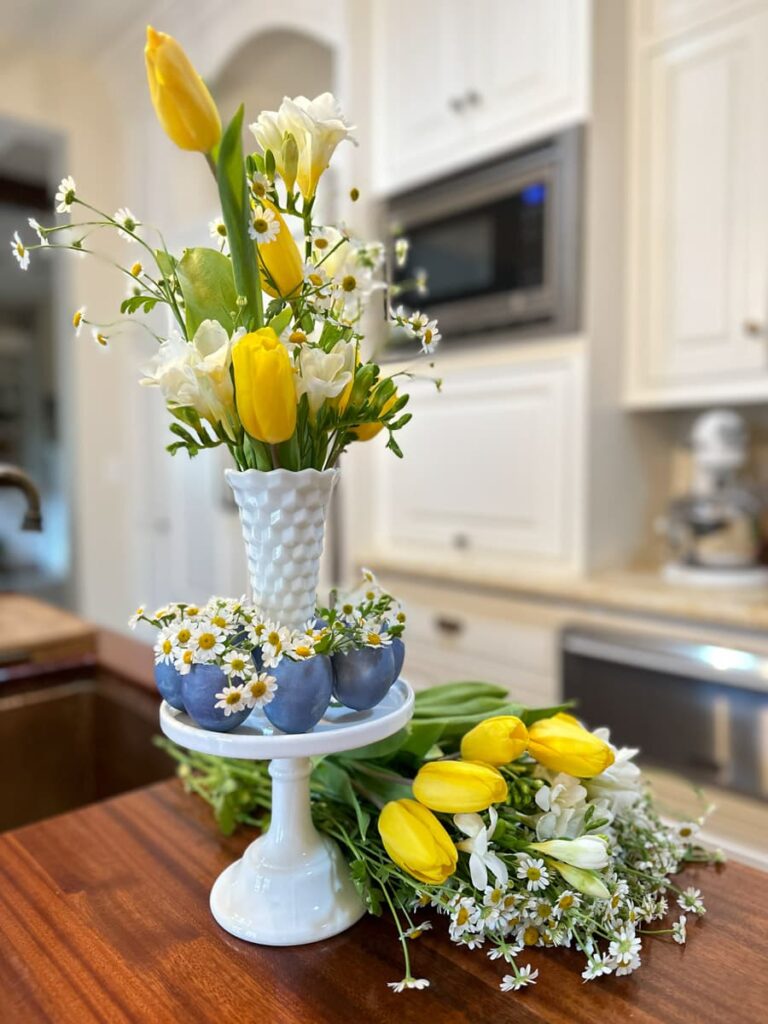
Now that you know how I dyed my eggs, let’s look at this sweet eggshell arrangement I made.
These eggs were not hard-boiled before dyeing, as this project will not work with boiled eggs.
Directions to empty the eggs
- Make sure your eggs are dry.
- Using a knife, tap the egg across the top quarter.
- Very gently remove a small piece of the shell.
- Pour the egg into a glass cup or dish. (with the cost of eggs, you do not want to throw them out) use your eggs for breakfast.
- Rinse and dry the empty shells well.
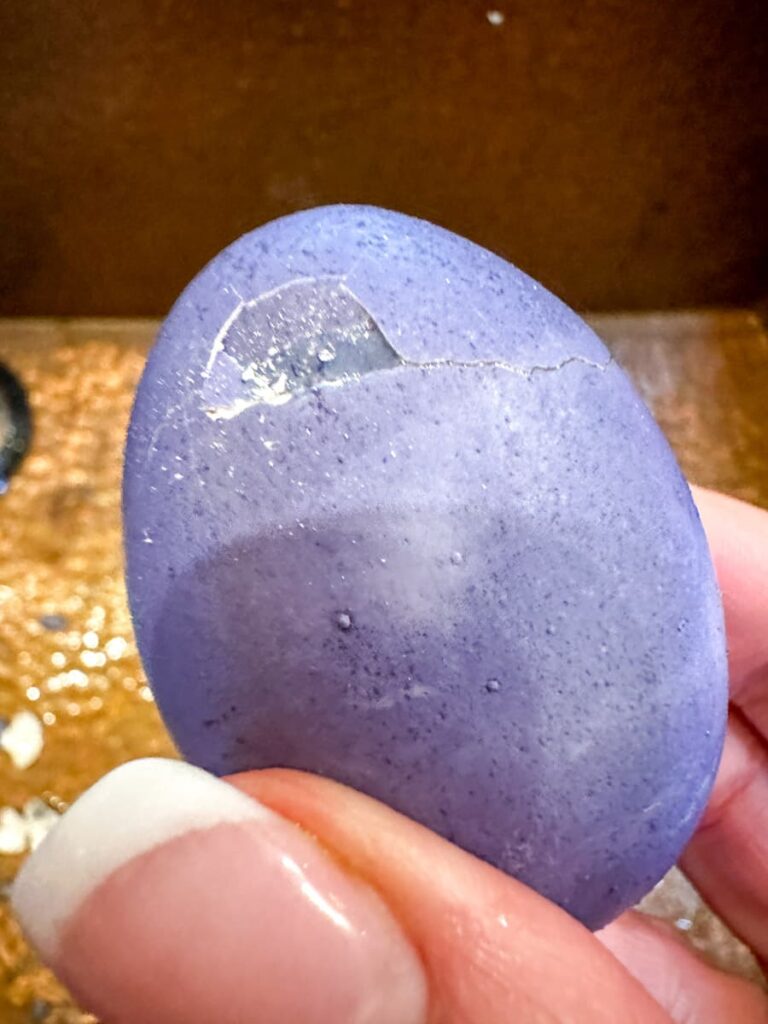
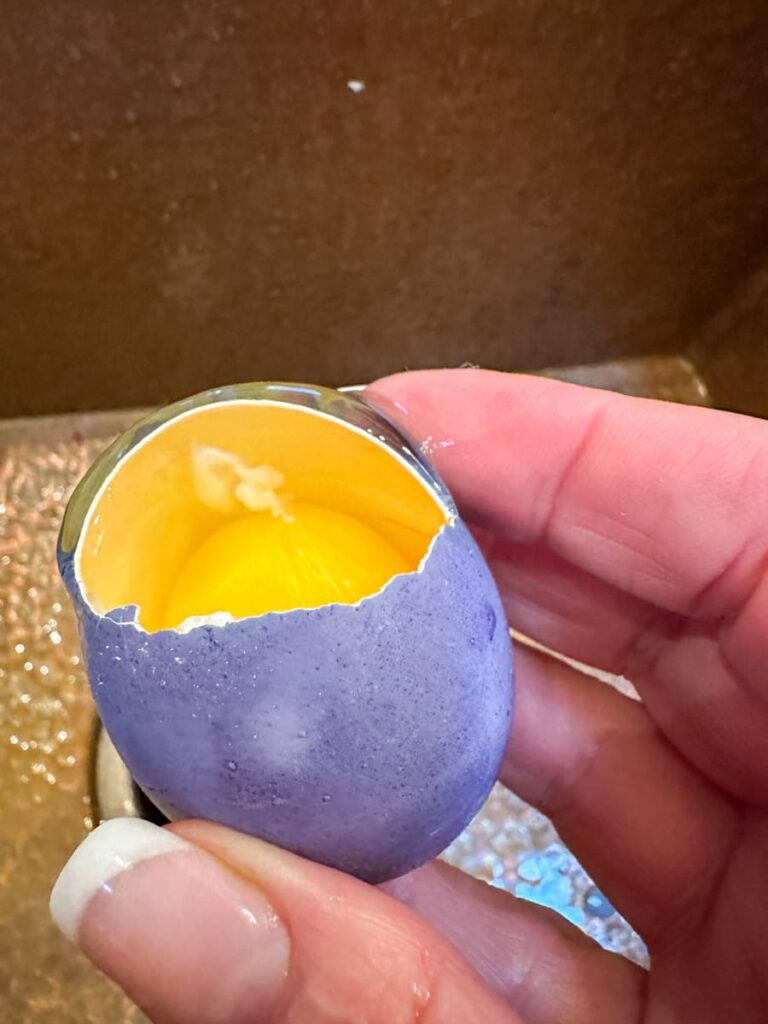
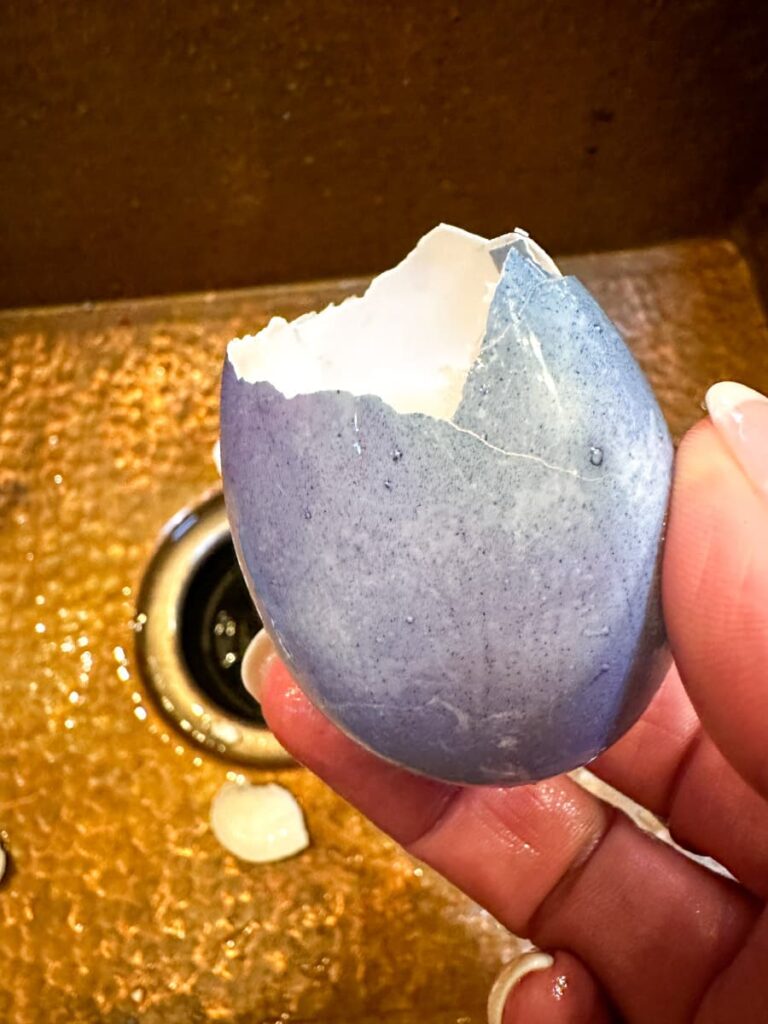
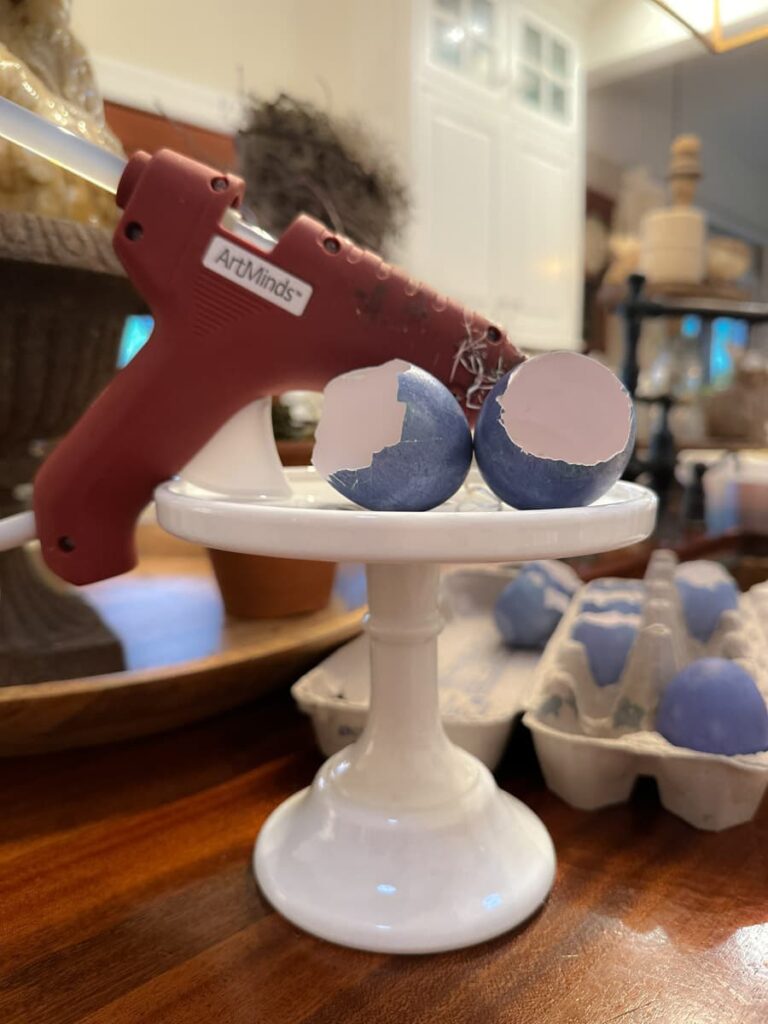
Assembling the arrangement
- Using a glue gun, hot glue the eggs together on the sides of the eggs in a circle to create a small wreath.
- Add a little bit of water to the inside of the eggshells.
- Add some small flowers. I used Chamomile.
- Add a small vase to the center of your eggshell wreath and fill it with some flowers. I continued to use the Chamomile along with a few tulips and Freesias.
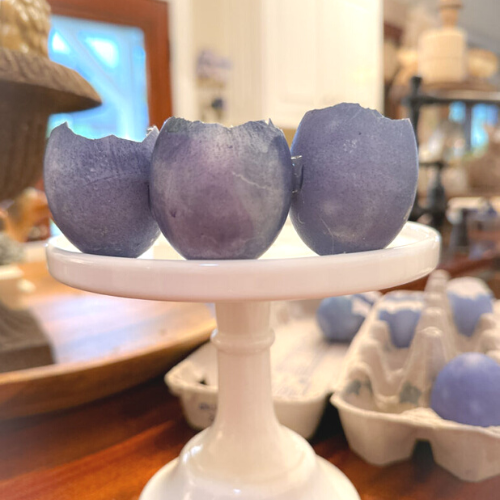
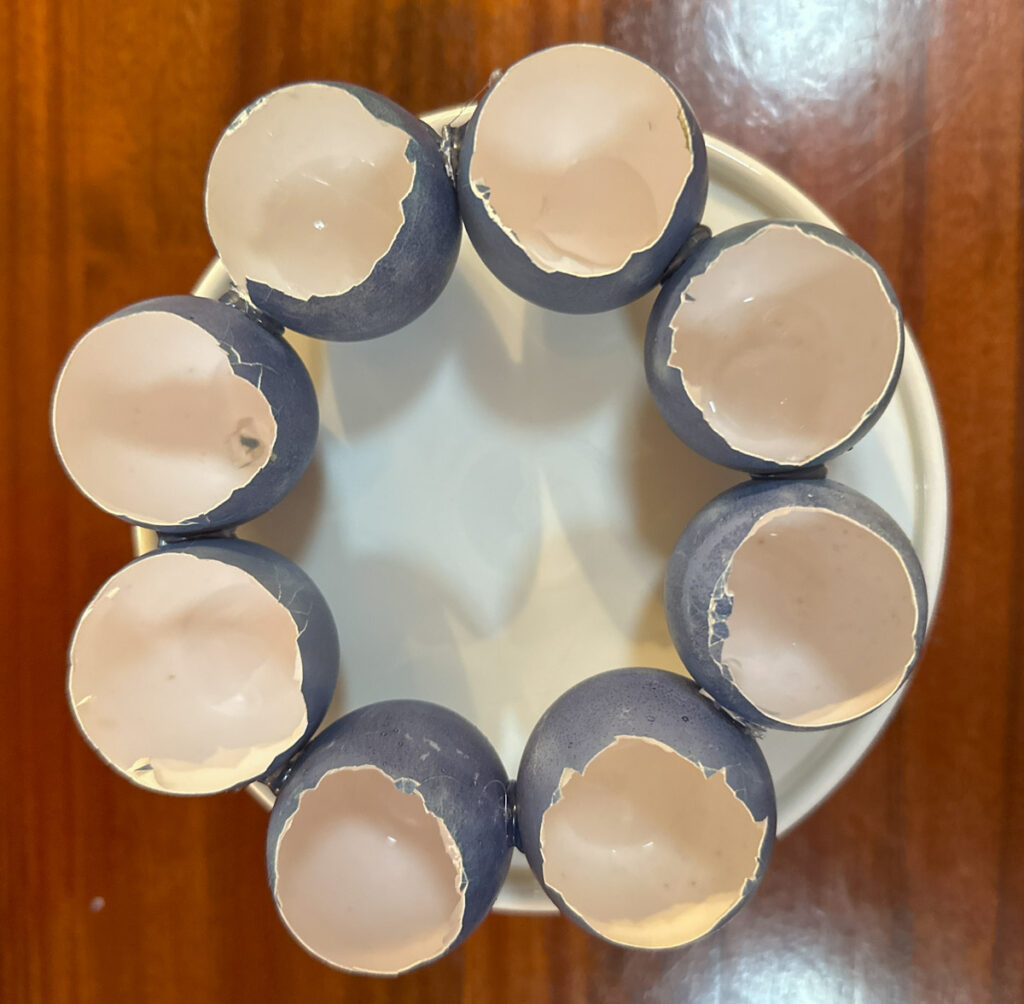
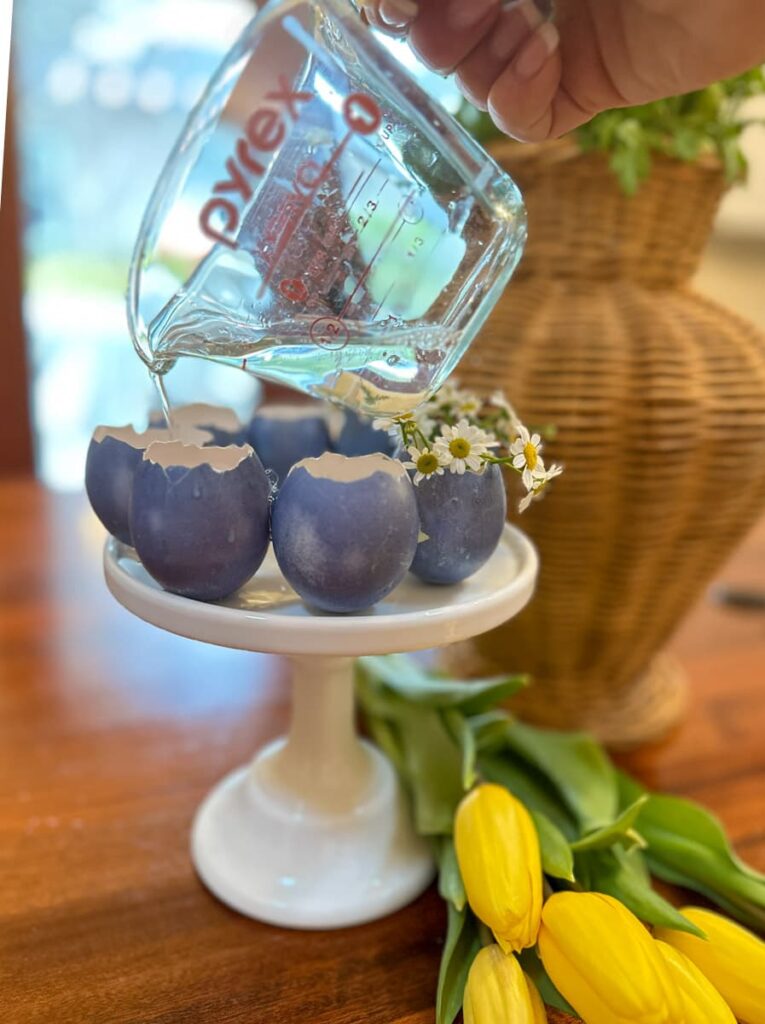
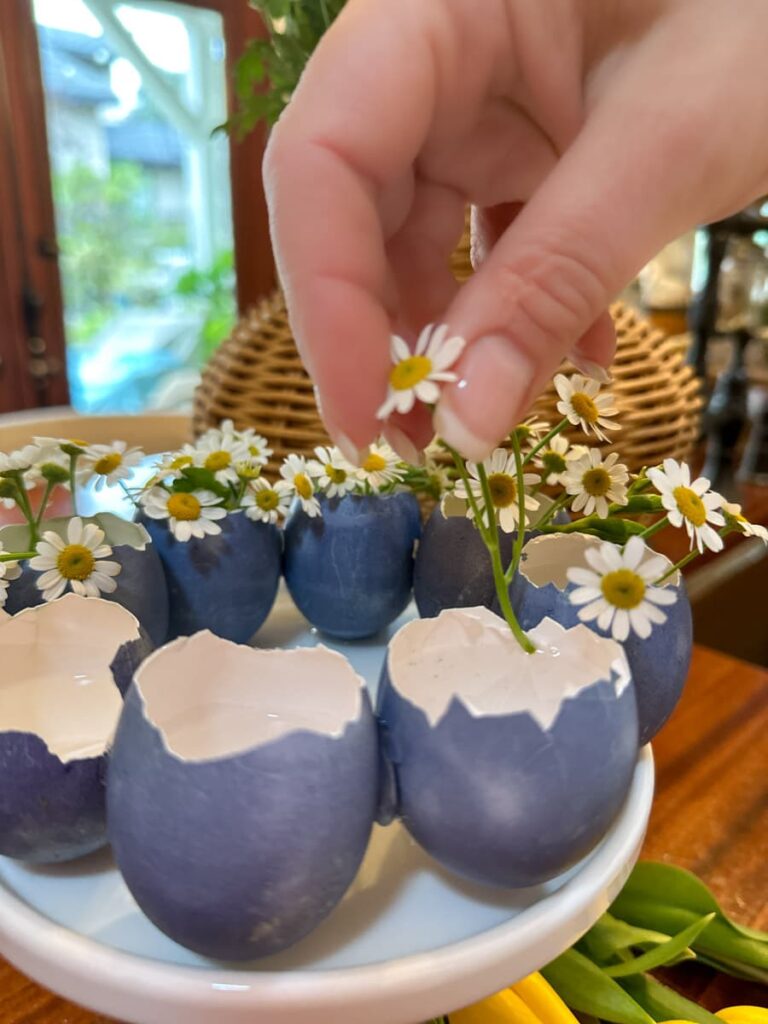
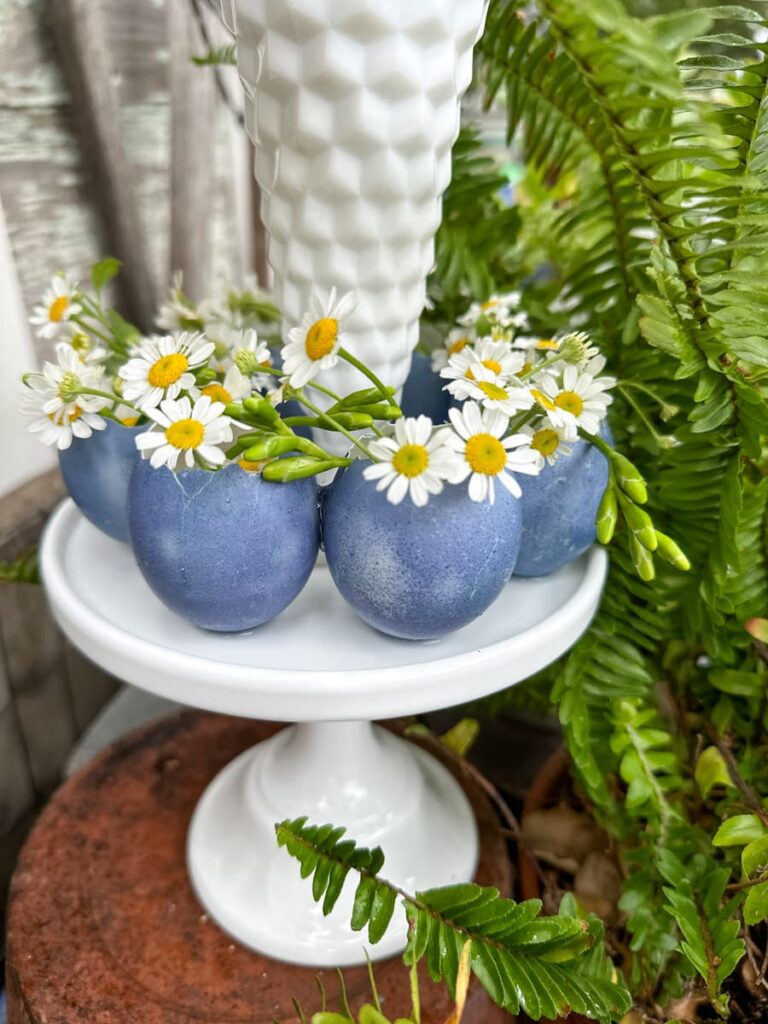
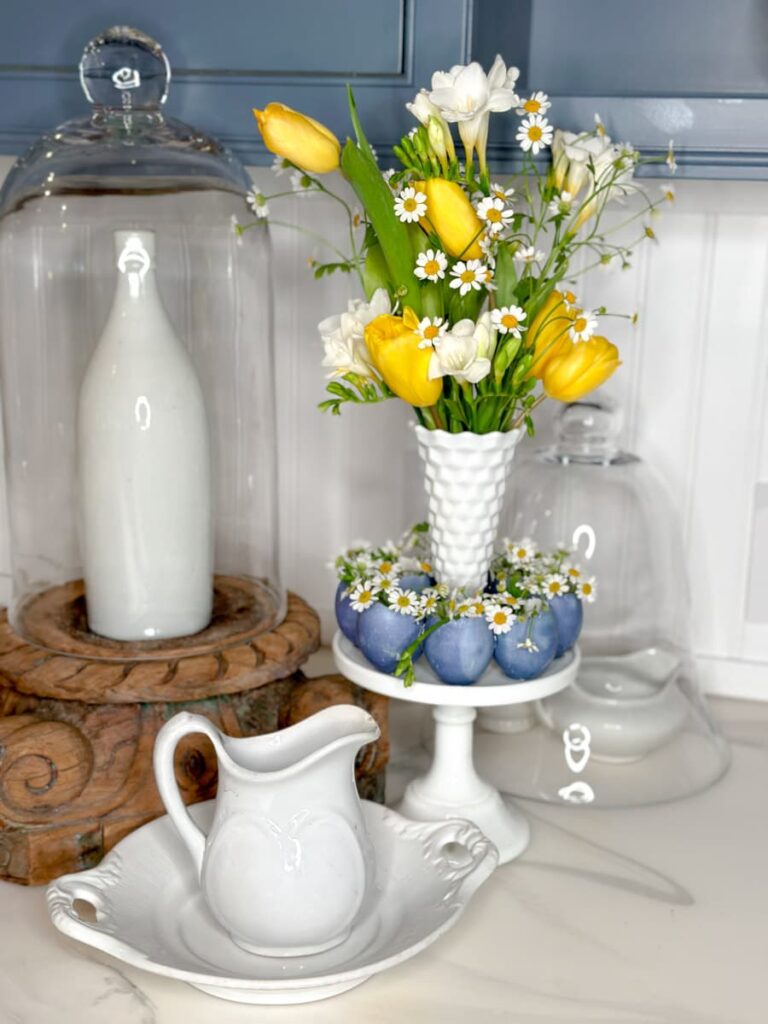
Be sure to check out what my creative blogger friends have created. I have linked to each of their posts below. Their projects are so beautiful.
All in all, creating natural dyes was a fun and educational activity you could do with the family. You can find many unique and exciting colors using natural materials available at home or in nature.
Taking the time to try these ideas is a learning experience and can spark creativity for other crafts and projects.
Until next time!

Additional posts you will love with naturally dyed fabrics
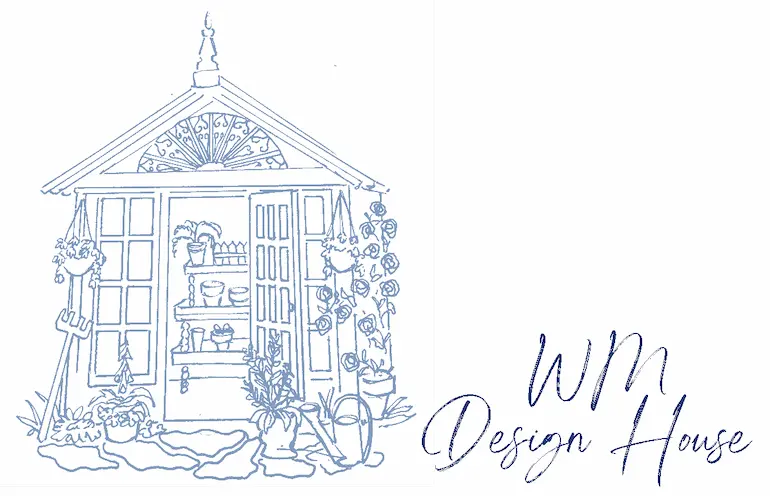
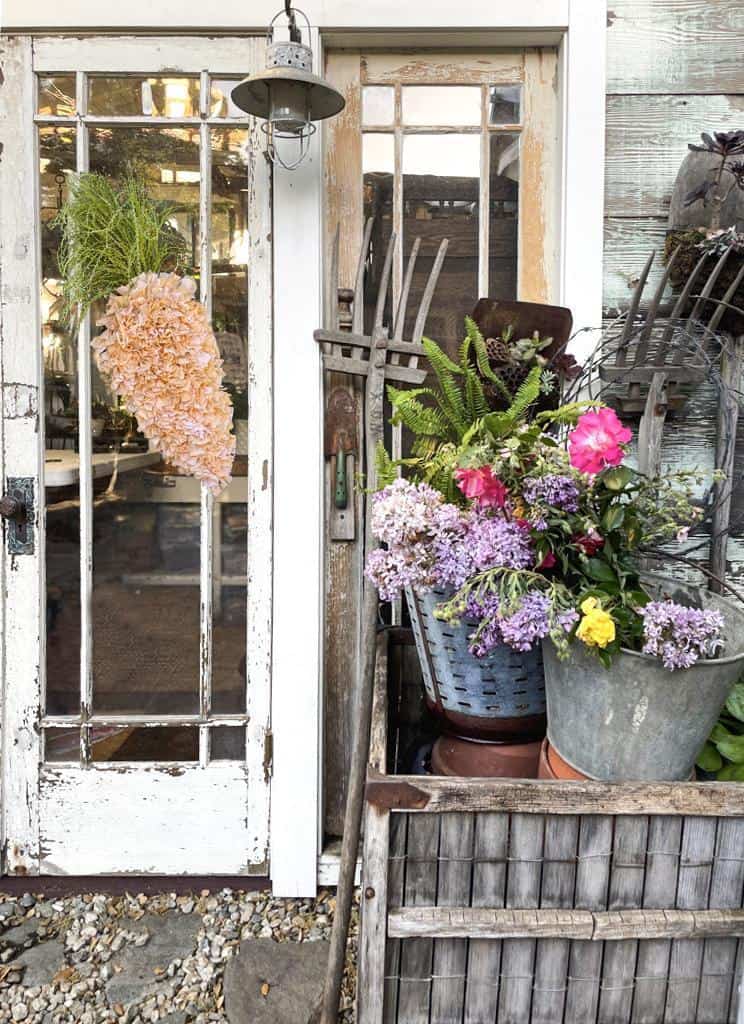
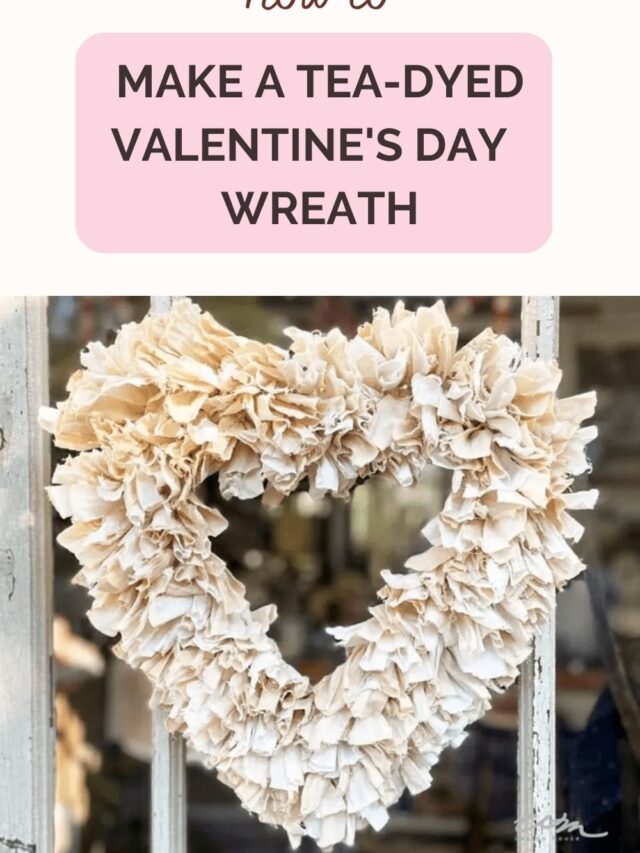
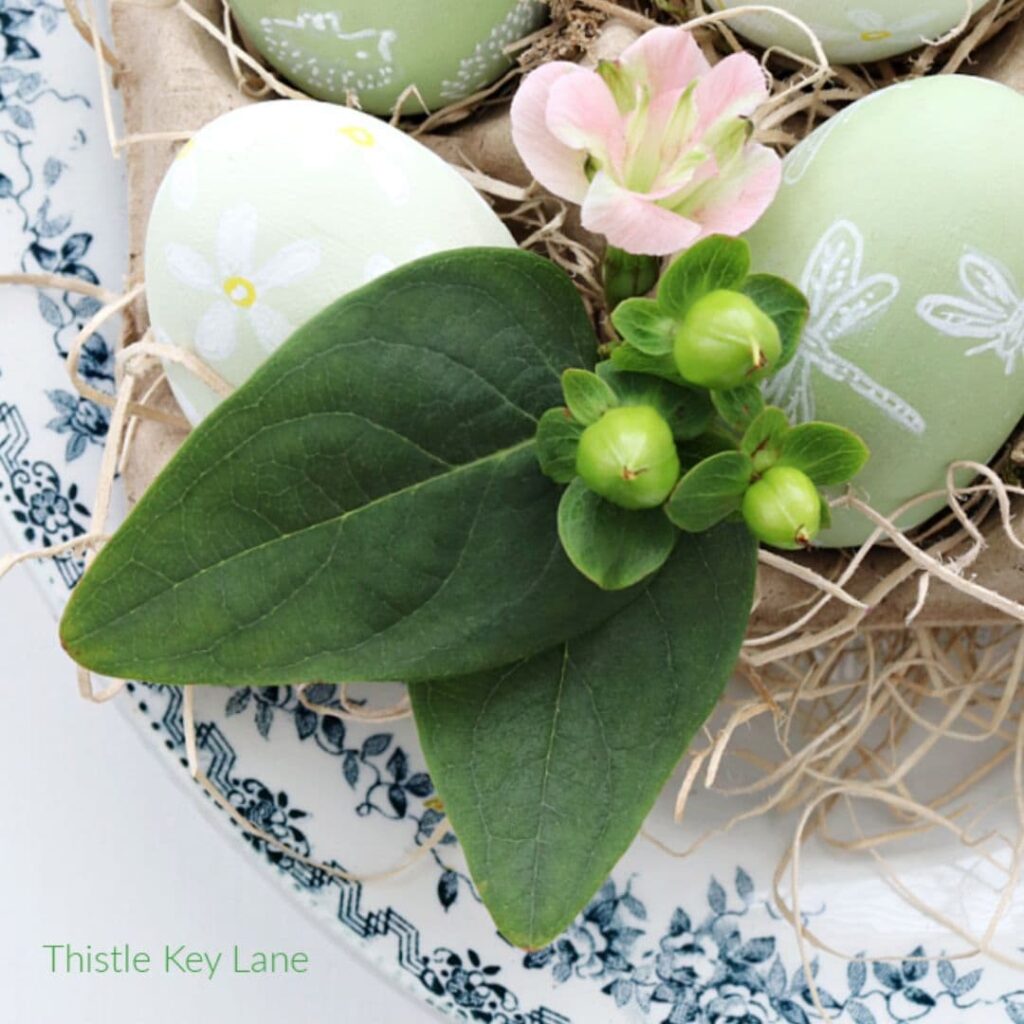
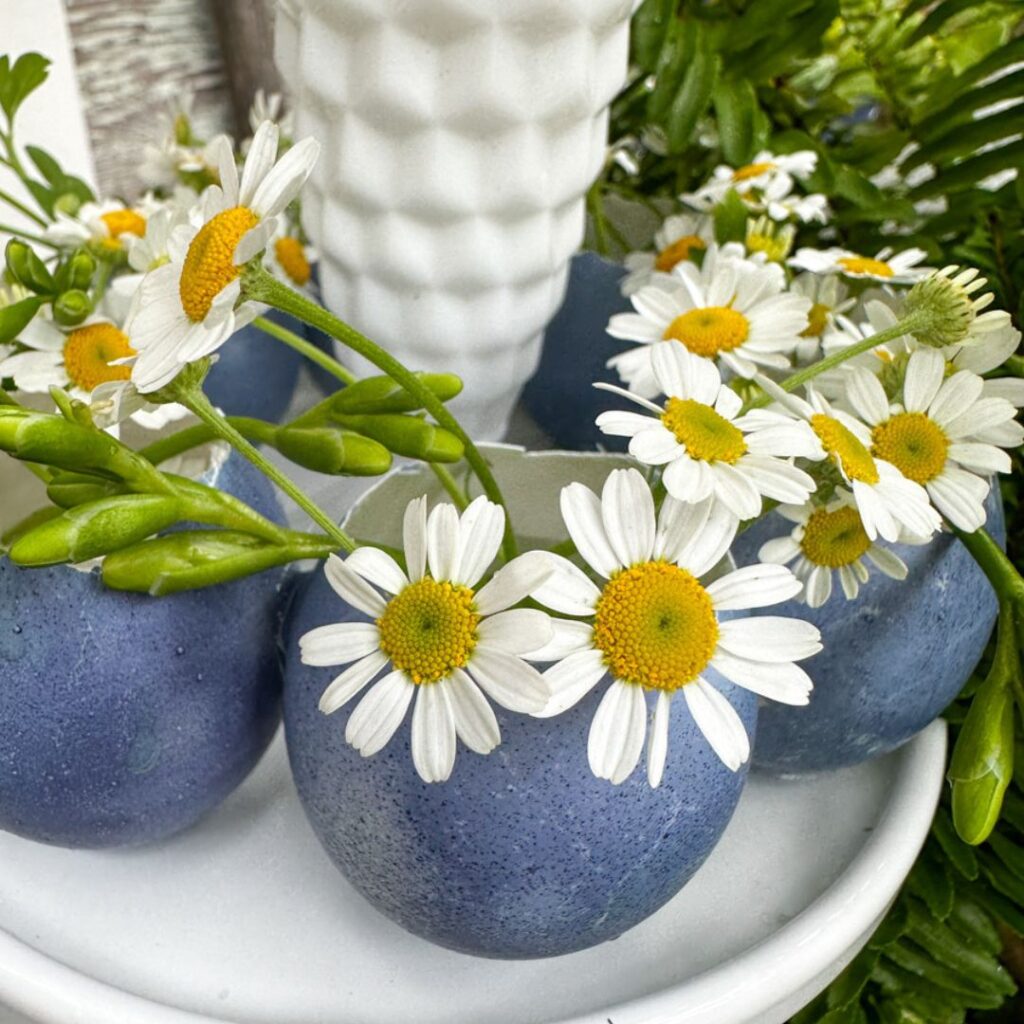
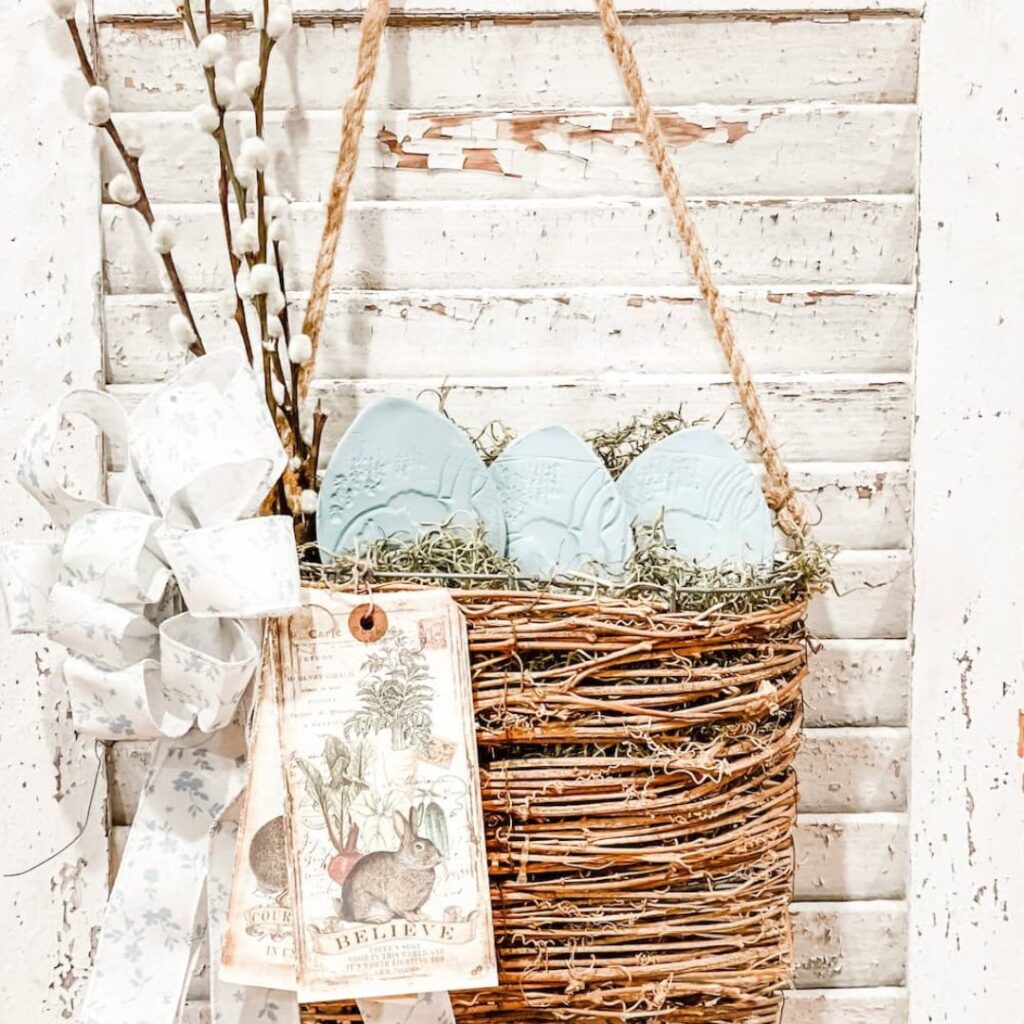
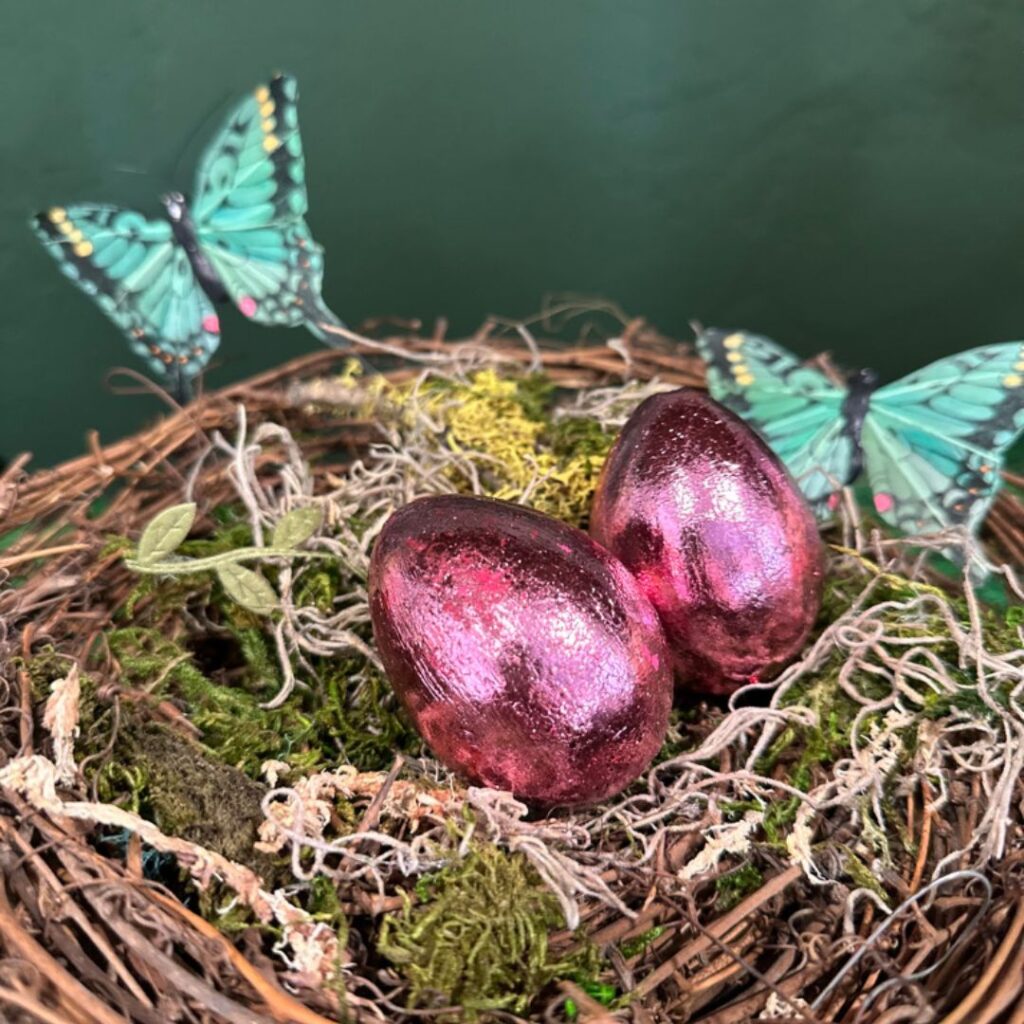
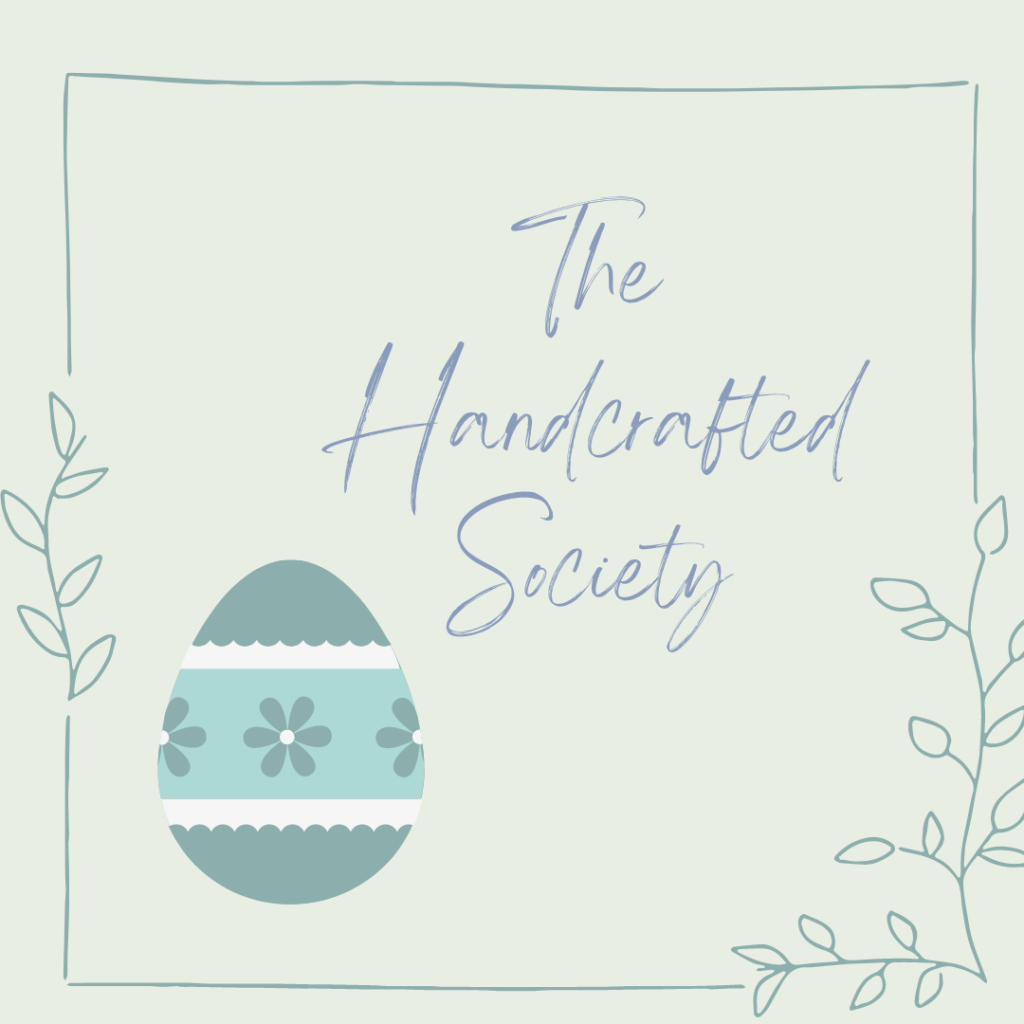
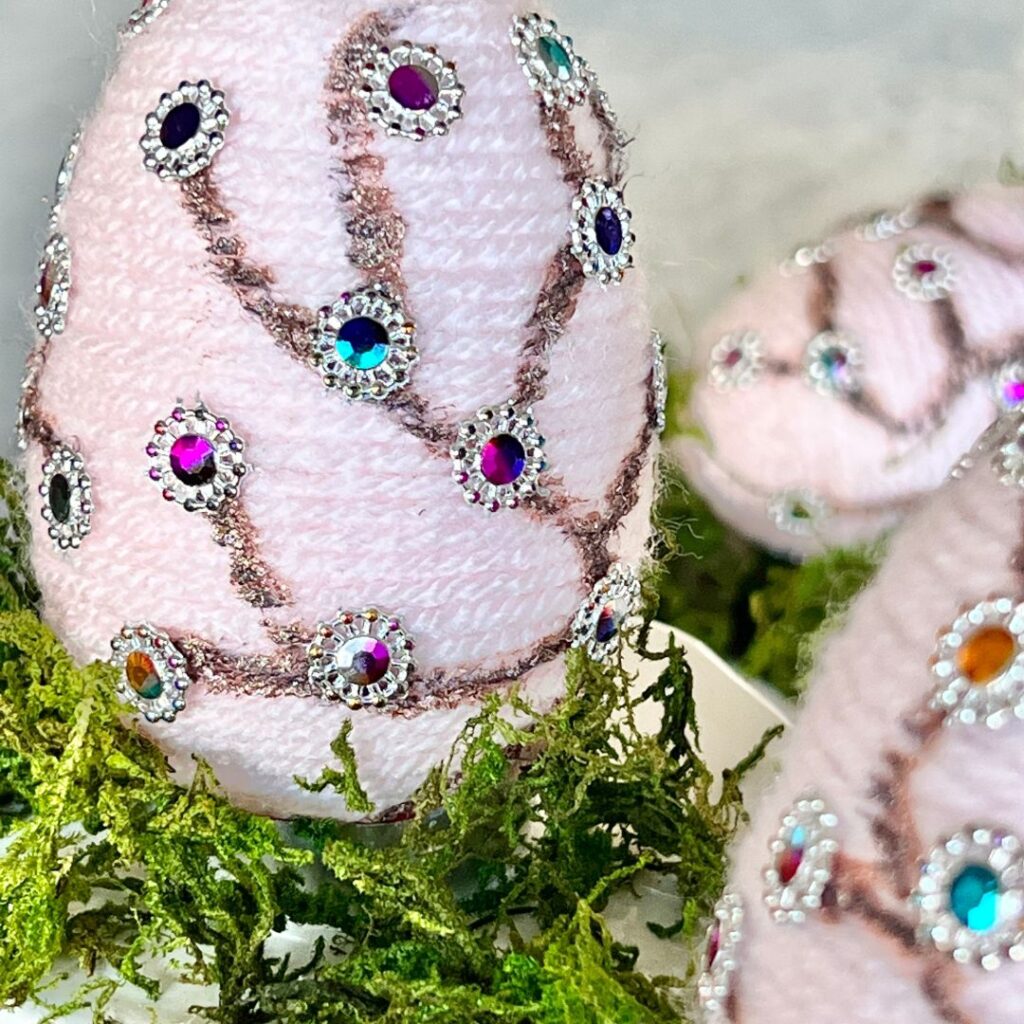
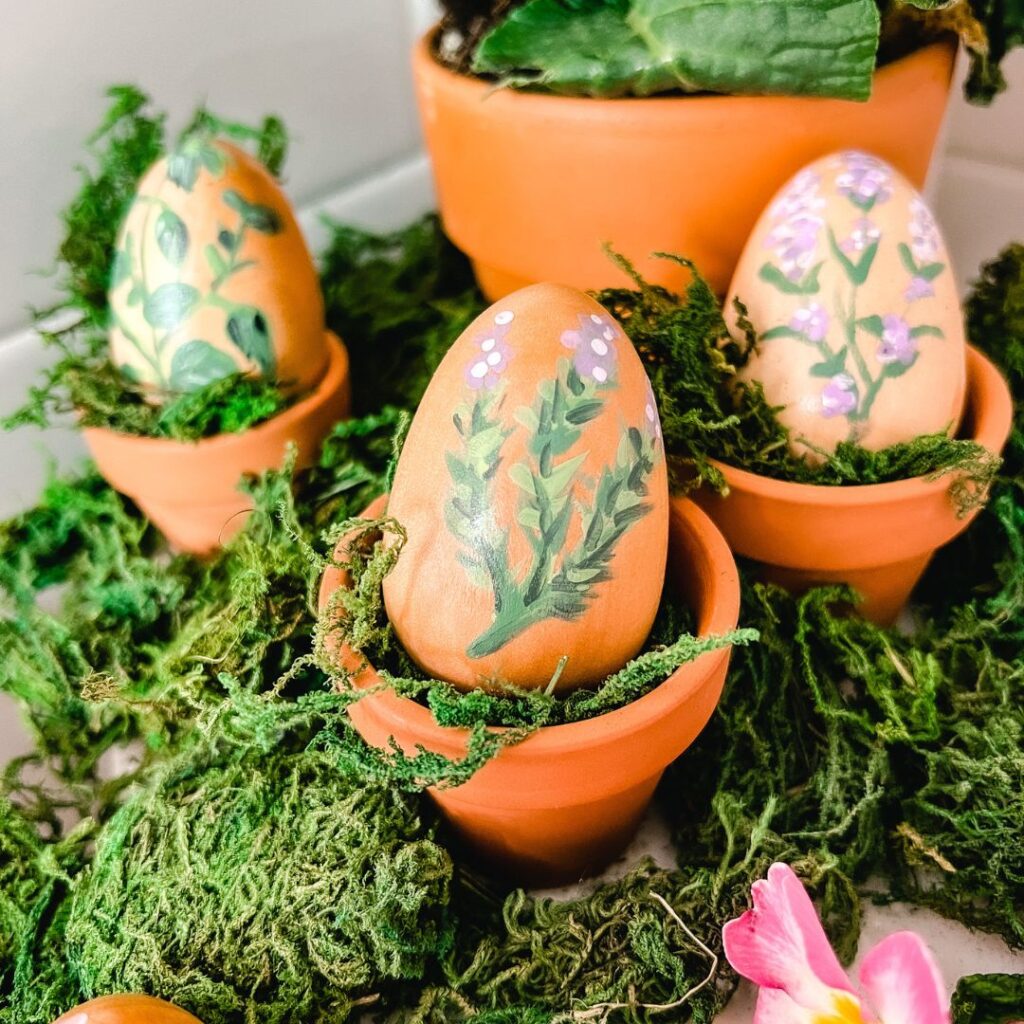
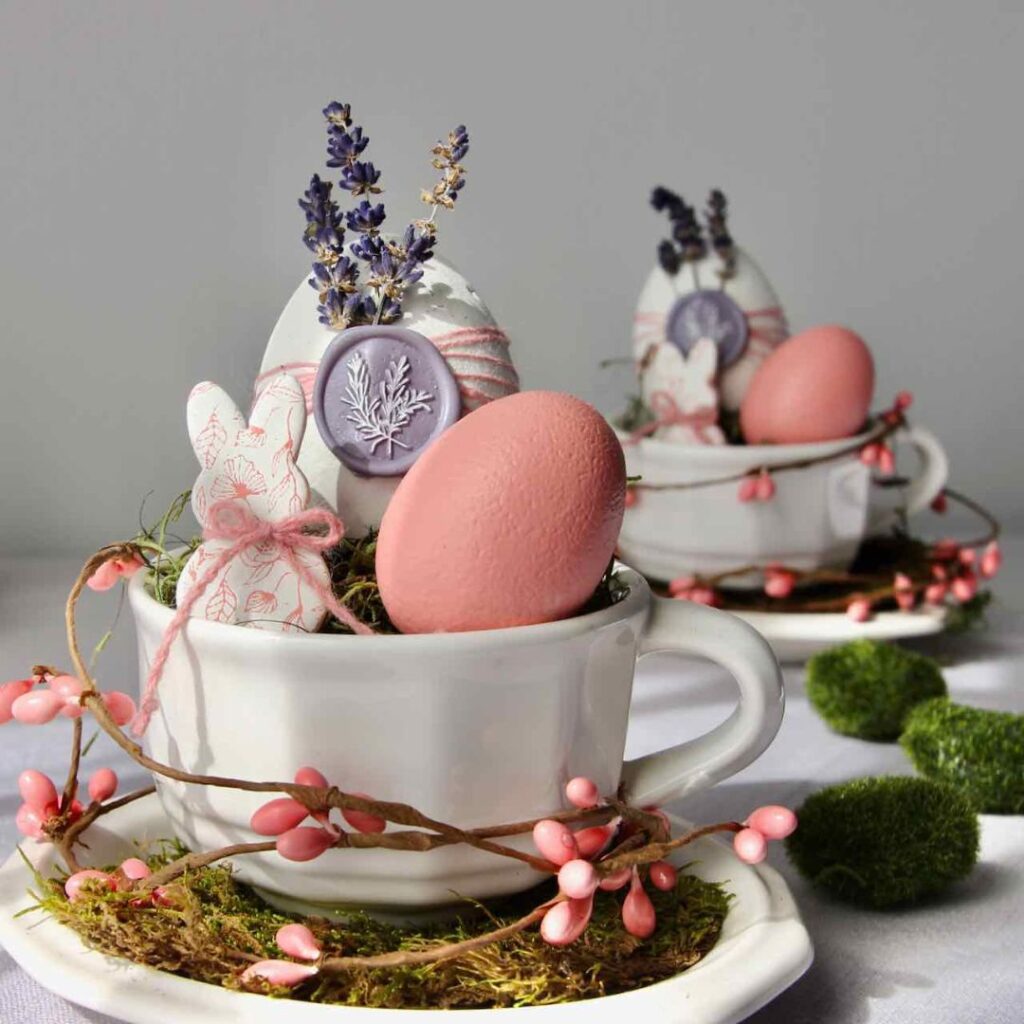
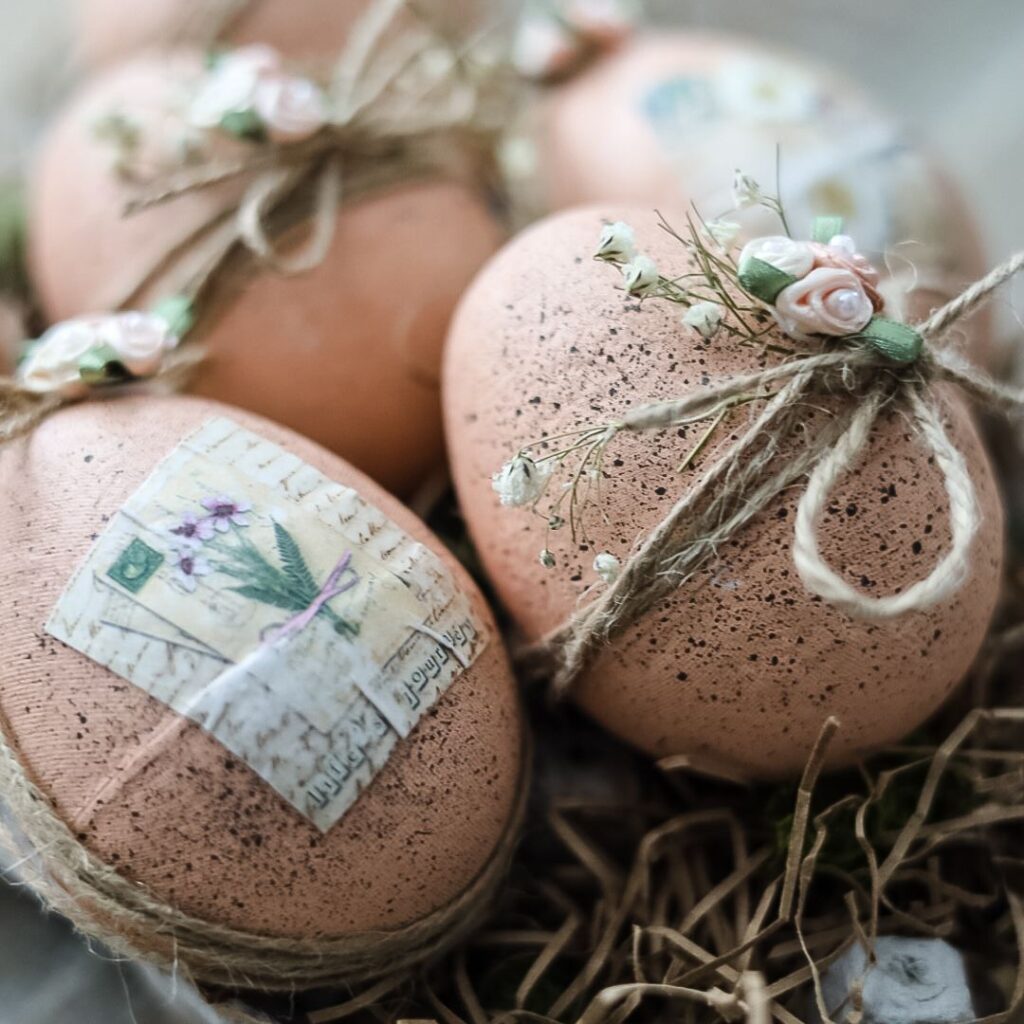


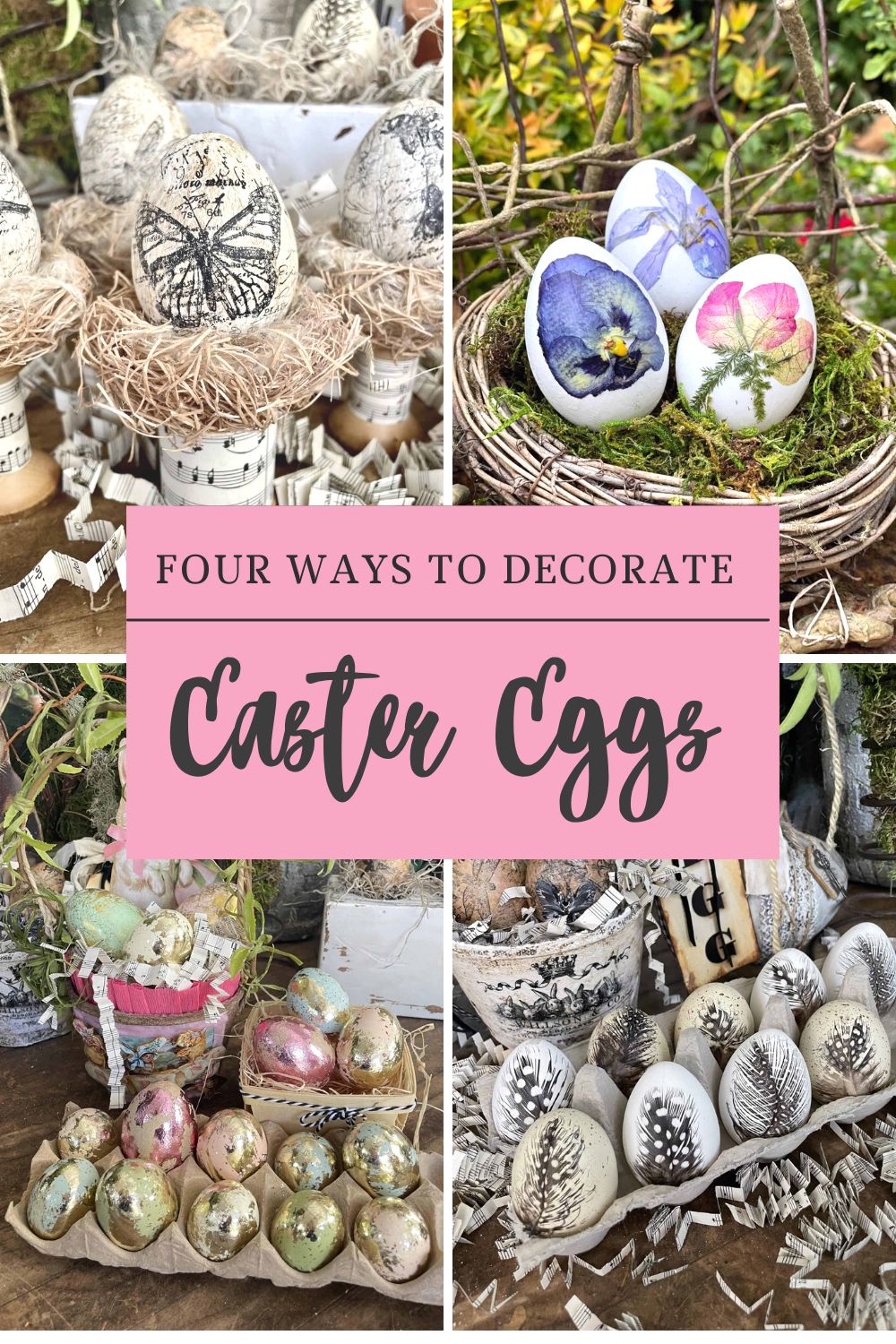

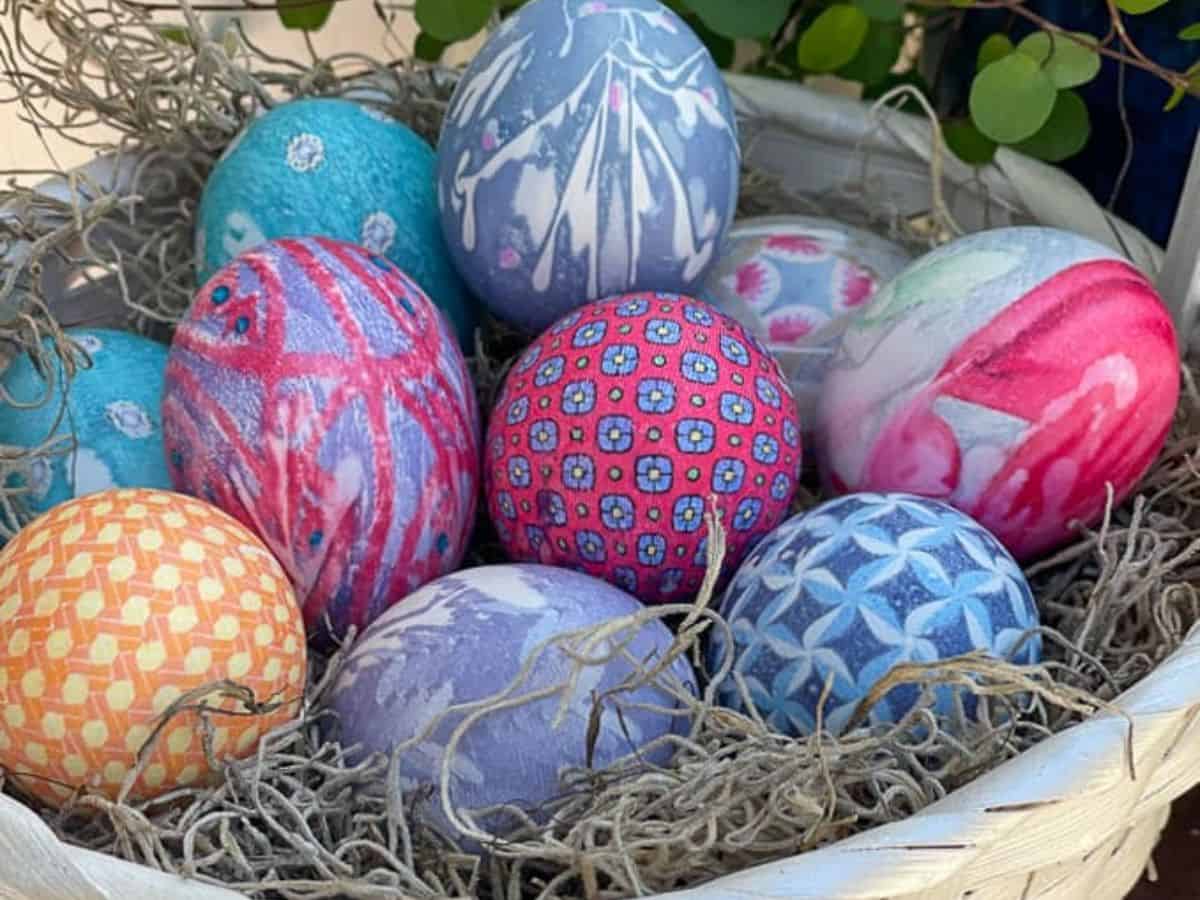

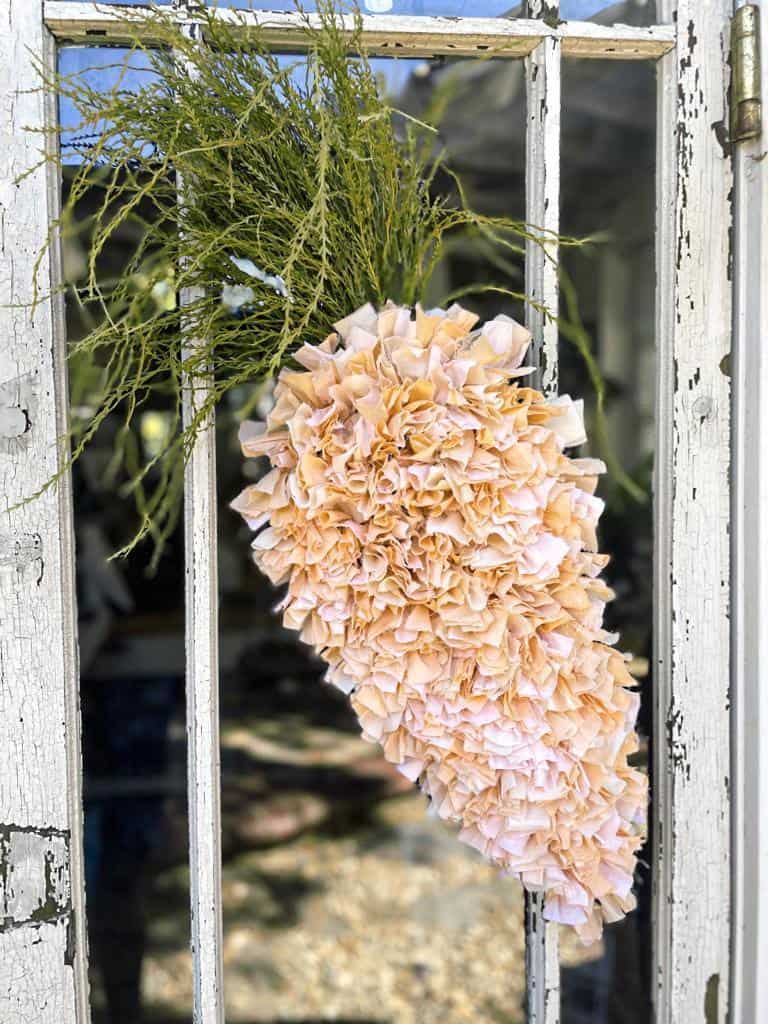
I love that tabletop arrangement with the flowers and eggs. SO pretty! It’s incredible how things from nature can create such stunning beauty, isn’t it?!
Thank you Rachel. It really is.
Oh, so beautiful! Thank you for this tutorial. I’ve always wanted to dye eggs with natural dyes. I’m happy to say I’ll be featuring this post at Thursday Favorite Things tomorrow. 🙂
Thank you so much, Pam. It was so fun to try the different foods that I had. The spices were new for me this year, and they did not disappoint.
I appreciate the share so much.
Omgoodness Wendy, these are gorgeous! I love the natural look of the eggs! I’m excited to tell you this post will be featured in this week’s Tuesday Turn About Link Party! Thanks for sharing your creativity and we hope to see you at the party this week! Pinned!
Thank you so much, Cindy! It is always such a treat to be featured by you ladies. Thanks, friend!
Oh my, I love how you’ve used natural ingredients to dye your Easter eggs, Wendy! Who knew red cabbage would produce a turquoise color? I also love the adorable eggshell flower vases; so cute!
I love natural dyes. Many years ago I thought I was so clever and tea dyed a comforter and pillow sham for an aged look. The pillow sham and comforter apparently were not from the same material lot and took the tea very differently. It didn’t stop me from using them though. Now I need to explore into more color! Love the blues. Thank you for sharing your inspiration with us.
Hi Cara, I believe that is part of the beauty of vintage-looking pieces. No two look alike. Try the blueberries dyeing, it
takes so well to fabric.
How gorgeous are these naturally dyed Easter eggs!! I think the ones dyed with blueberries are my favorites, but all are so pretty!! Love this DIY!
Thank you Brooke, and the fabric took so well to the blueberry dye as well.
Every time I open my refrigerator, I think of what I could use to dye Easter eggs! So much great information here, Wendy! Thank you! Pinned!
Amazing Wendy! I had no idea you could make so many beautiful colors with vegetables and spices. I like the colors you came up with far better than the ones from the store. Thanks for sharing such great tips!
Thank you Crystal. You really can get some amazing colors from natural dyes.
Love this post Wendy! So many wonderful ideas for dyeing eggs naturally. The way you styled the egg shells was darling! Susan
Oh my goodness, the colors are just amazing! I can’t wait to try this!! Pinned 🙂
xoox
I had no idea you could make so many colors!! The avocado making pink blew my mind!!! That’s so cool!!
Wendy – beautiful. I think you are on to something dyeing the fabric swatches. Who knew you could use all of those foods and flowers! Your egg vase arrangement is precious. Pinned.
The colors are stunning! I never thought natural dyes could be so vivid!
Such fun hopping with you!!
I know this is about the eggs, but that blue fabric is so beautiful! I need 25 yards of it!!!! I pinned it so I can drool over it!
It is fascinating to learn all the ways to get such beautiful colors from natural dyes! And, your egg vases are absolutely adorable! Pinned!
Thank you, Michelle. It was a fun post to write. There are so many options.
Thank you, Missy. My apologies for being so late in responding. It has been a crazy week again.
I’m fascinated with the natural dye technique and those colors are gorgeous! The wreath you made with the navy eggs is so precious, and I love the arrangement you created! Wonderful post Wendy!
Wendy
So much great information in one post. I was going to dye a tablecloth with tea but might try some of you veggie ideas. I love egg shell arrangement. So creative.
Thank you, Rachel. I will say the blueberries worked well. Just make sure you remove as much of the pulp as possible from the dye.
Great ideas! I love this. Hugs to you.
Thank you Renae, I hope you are doing great.